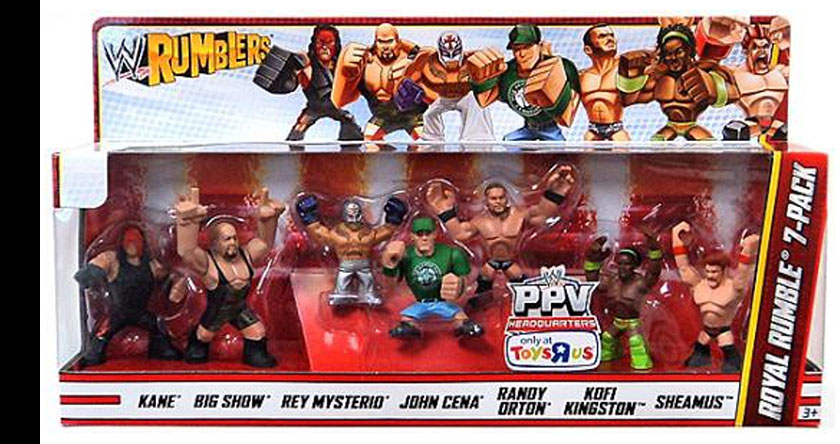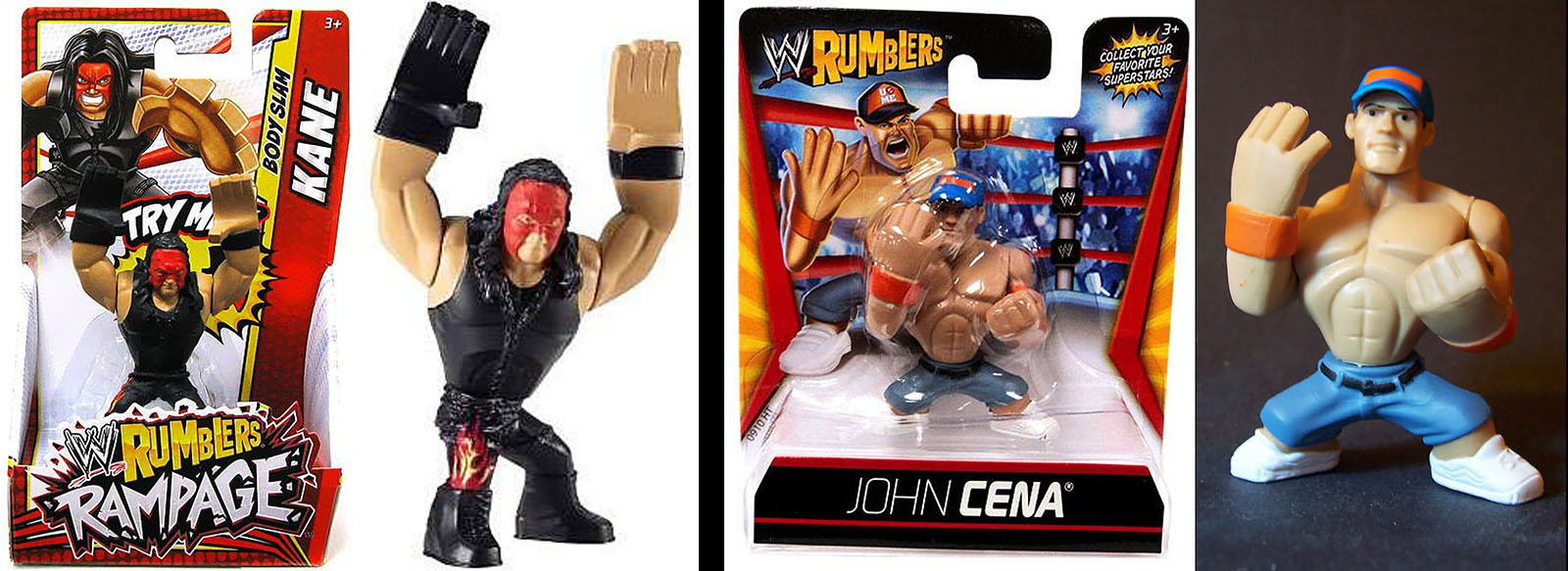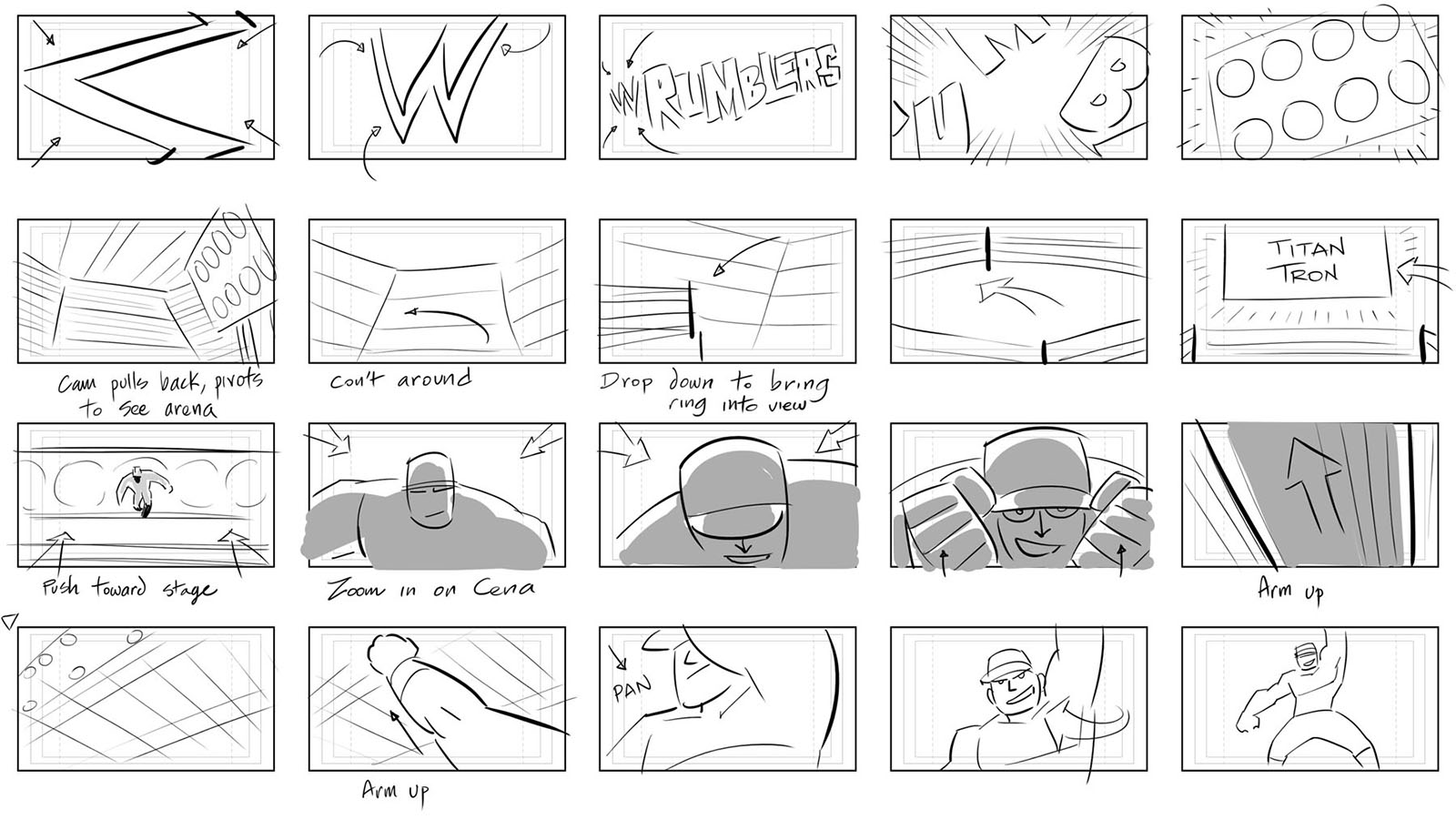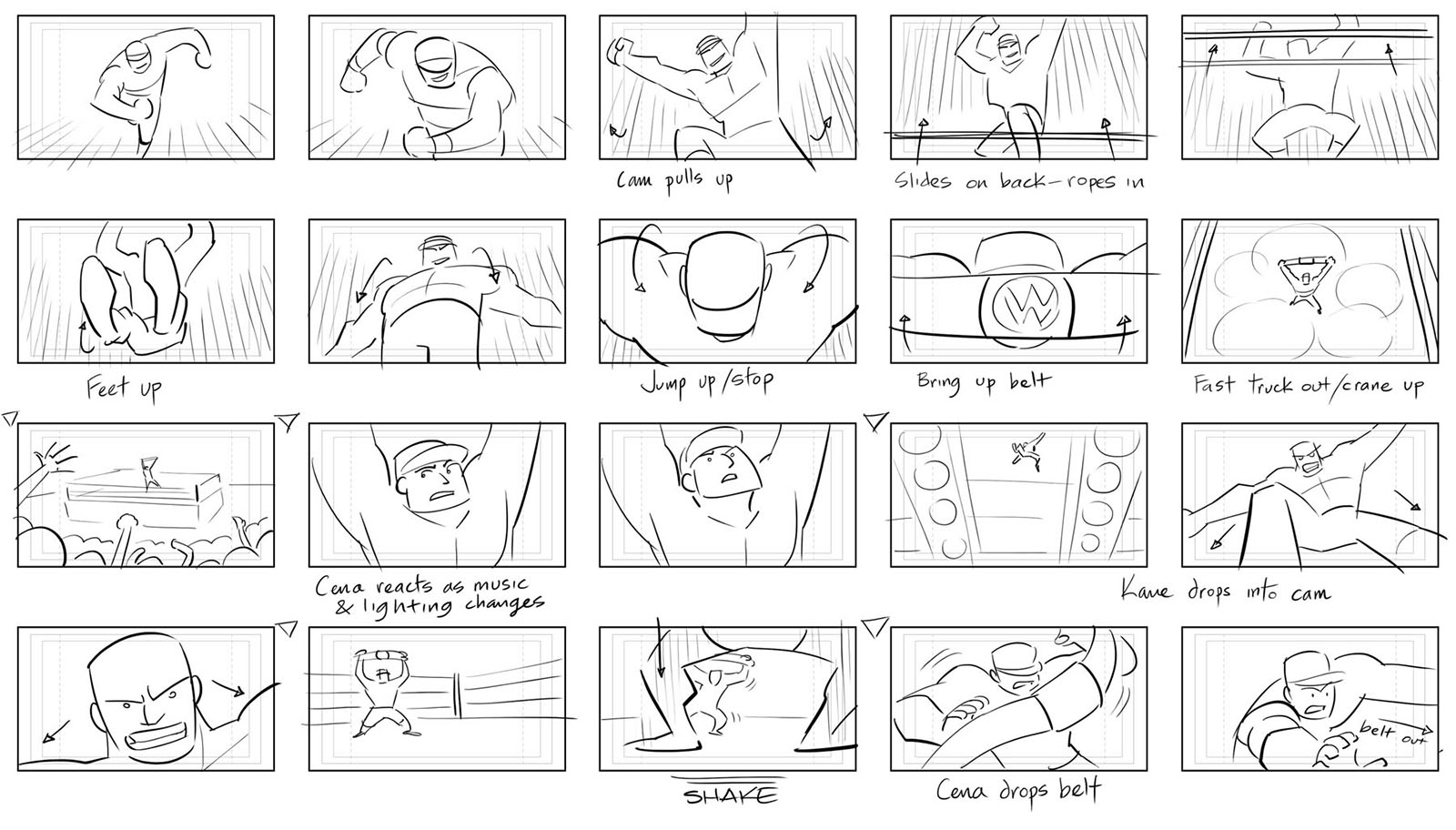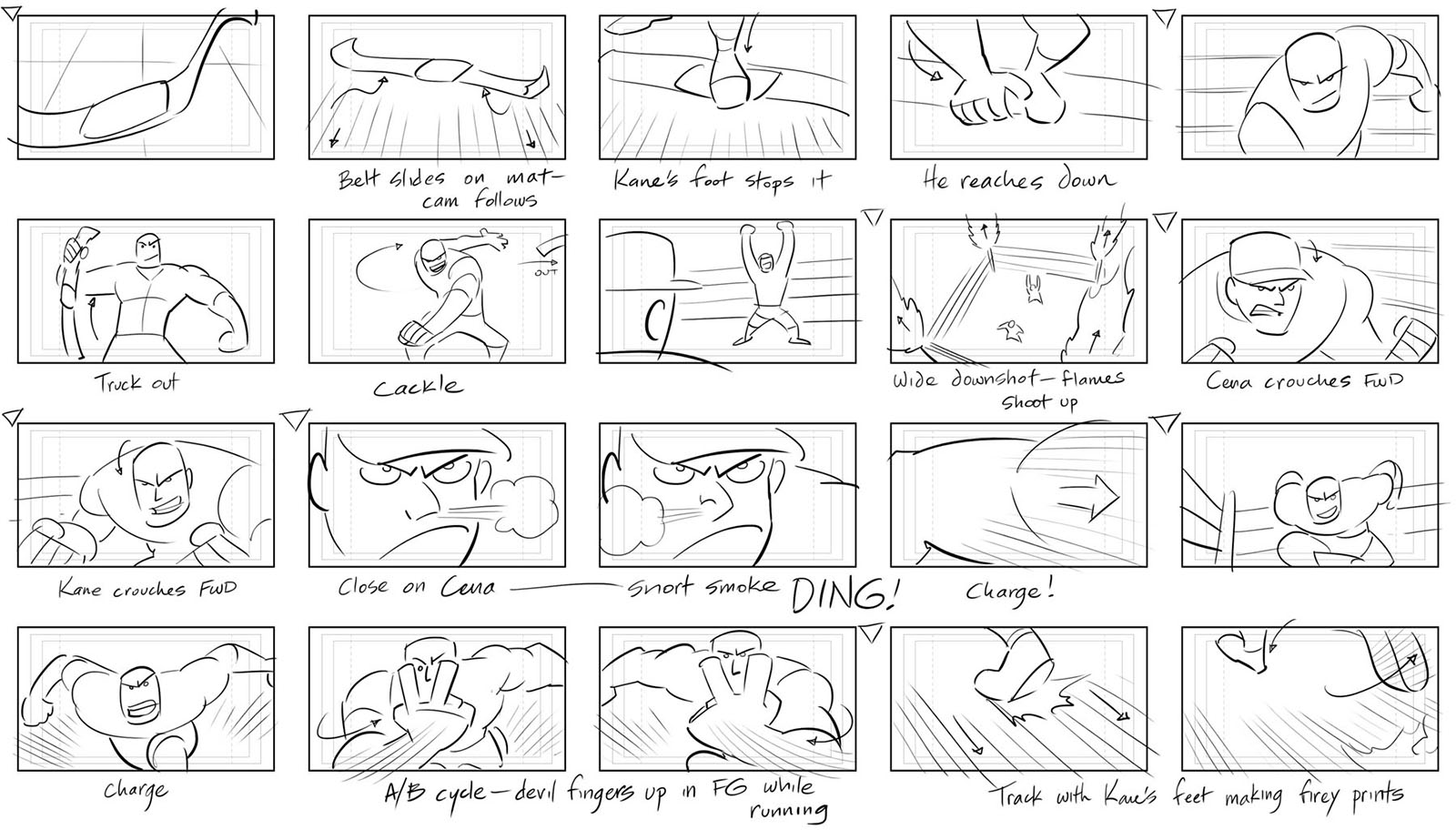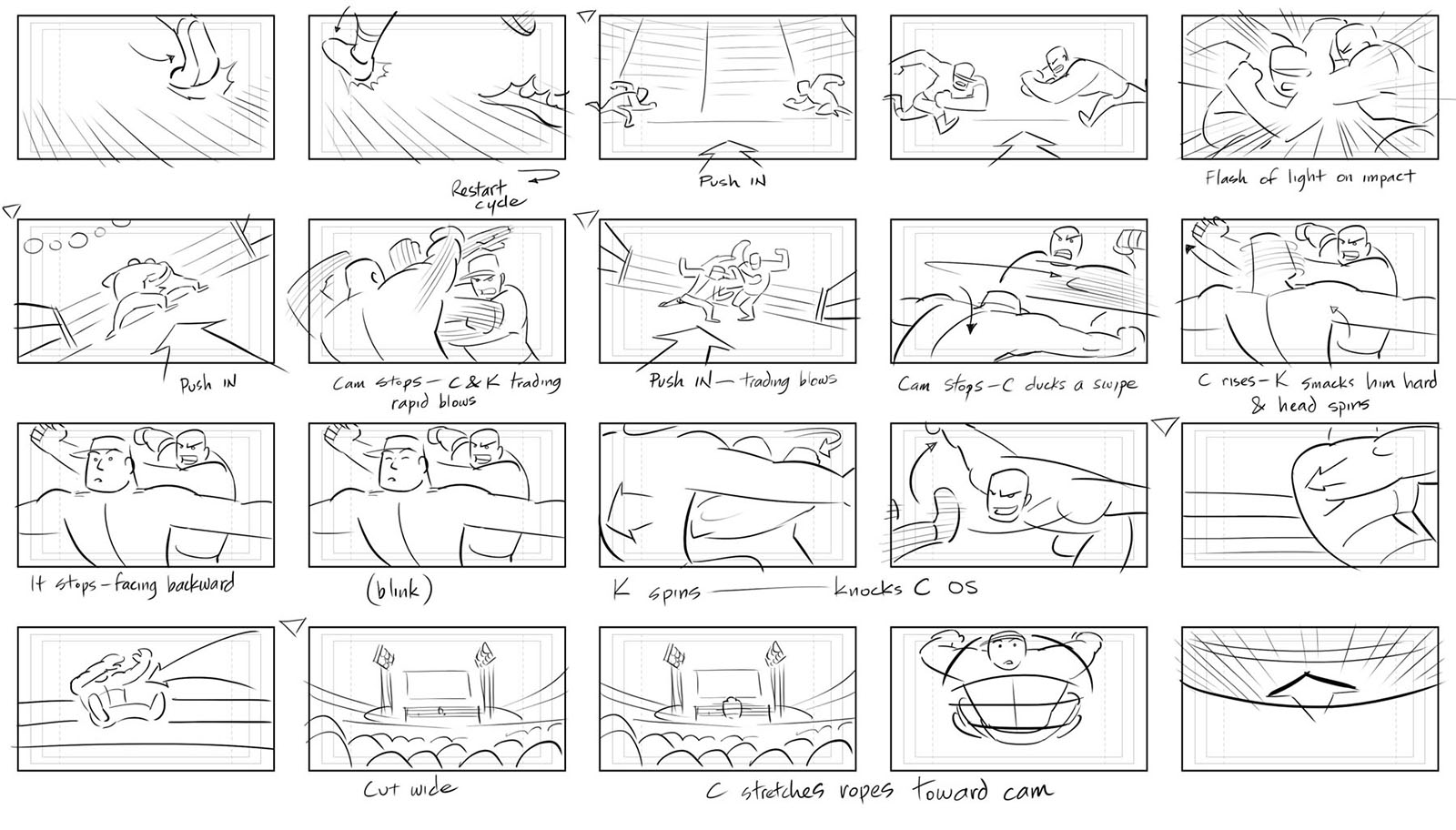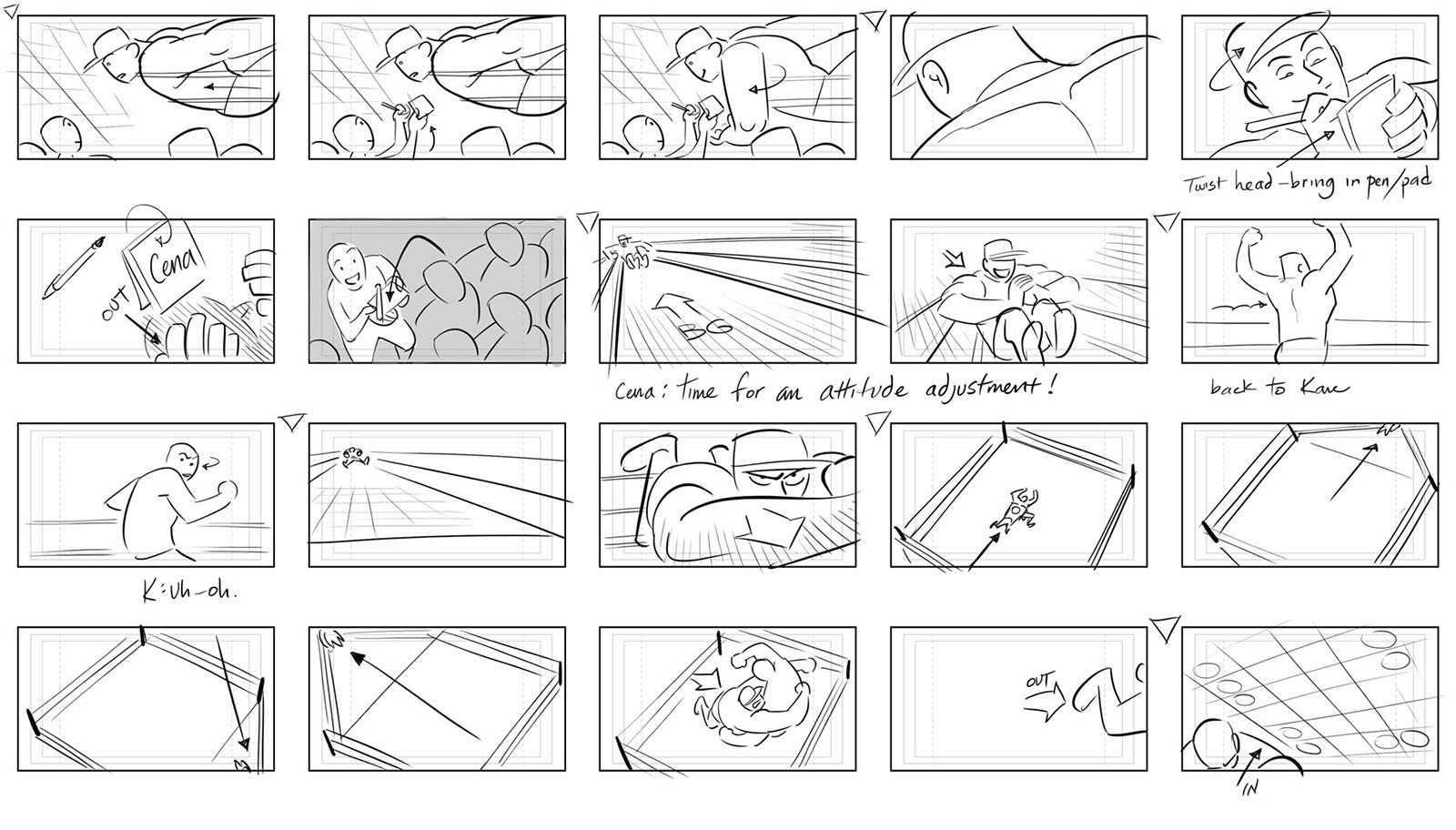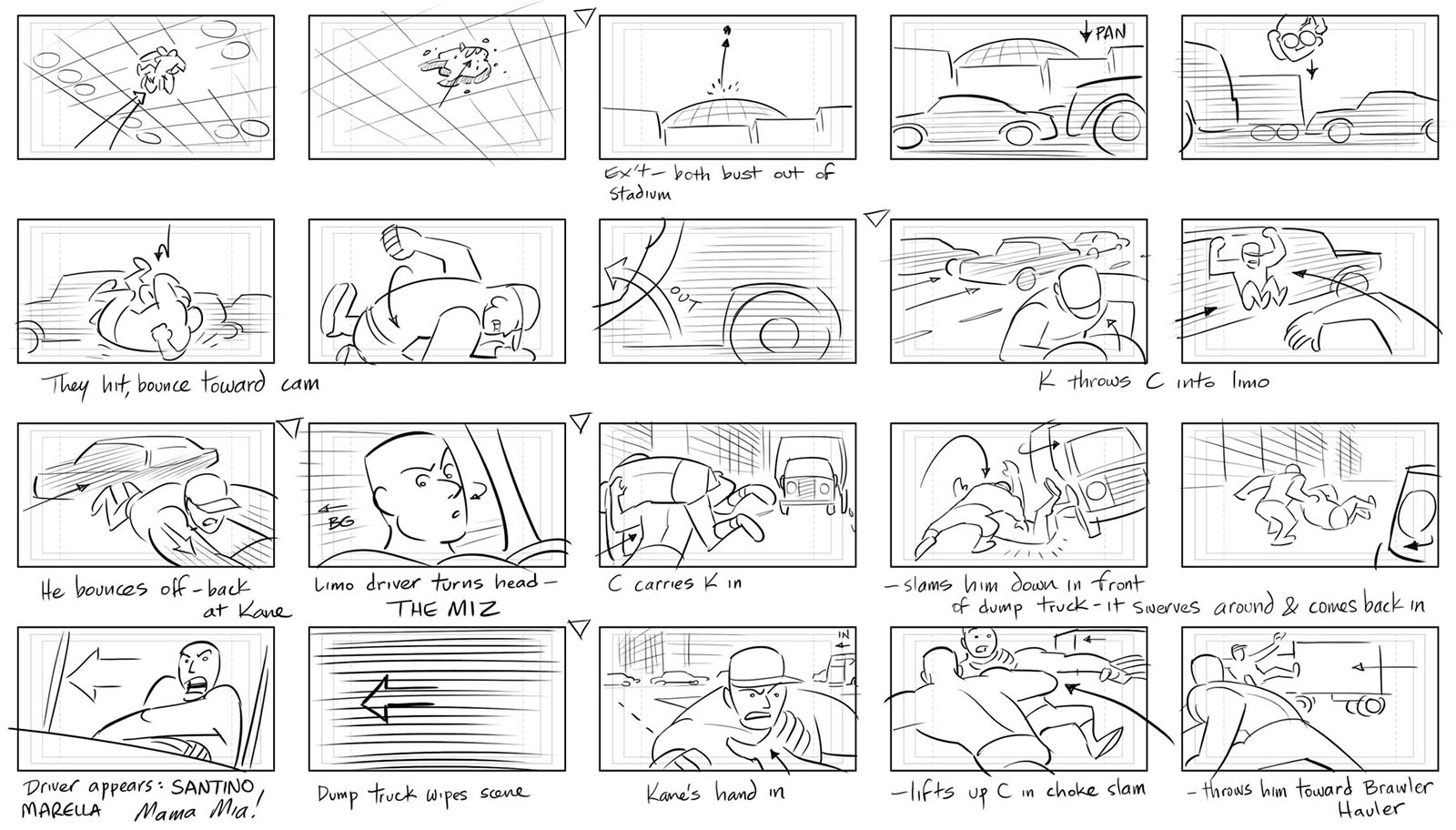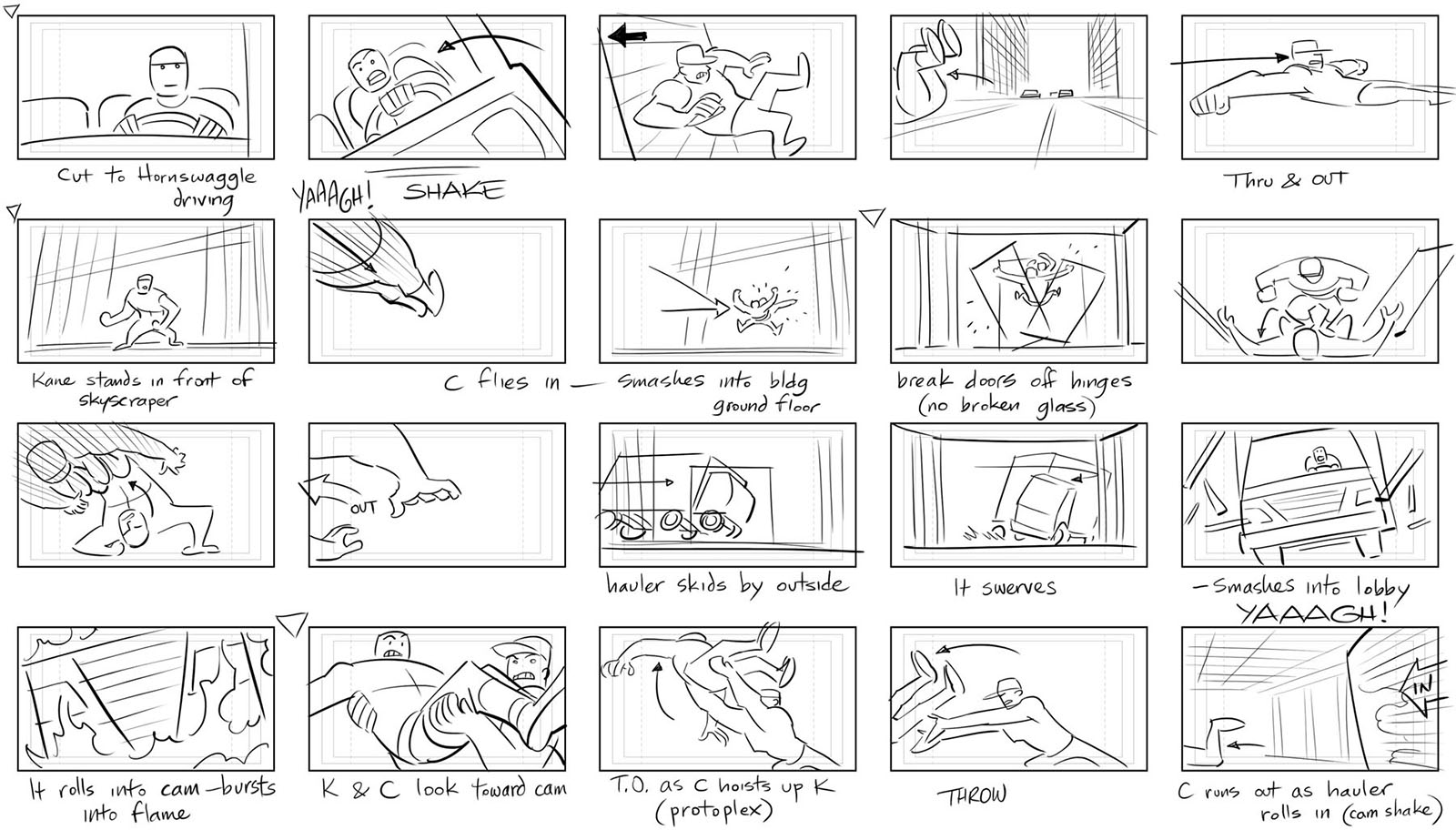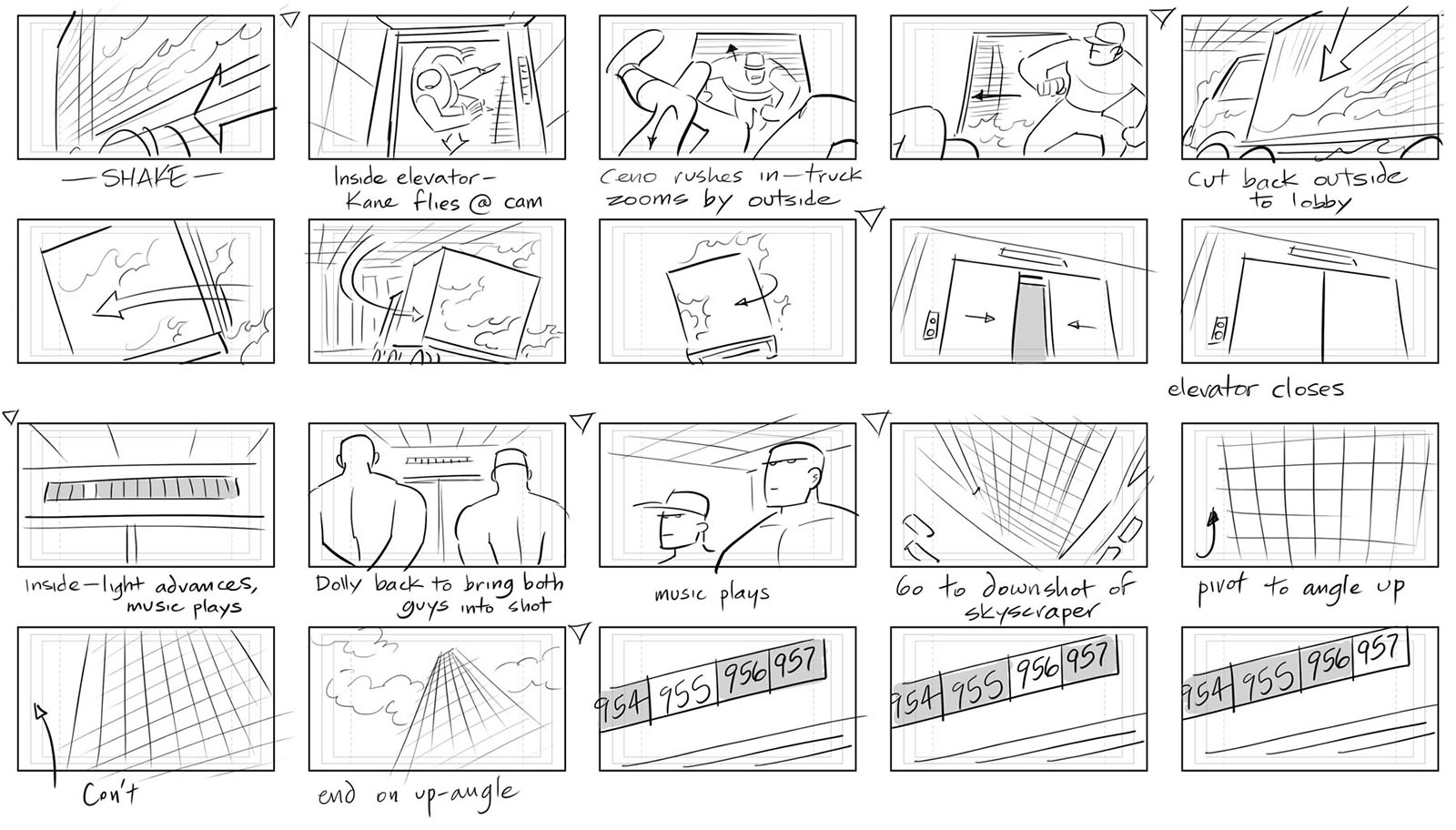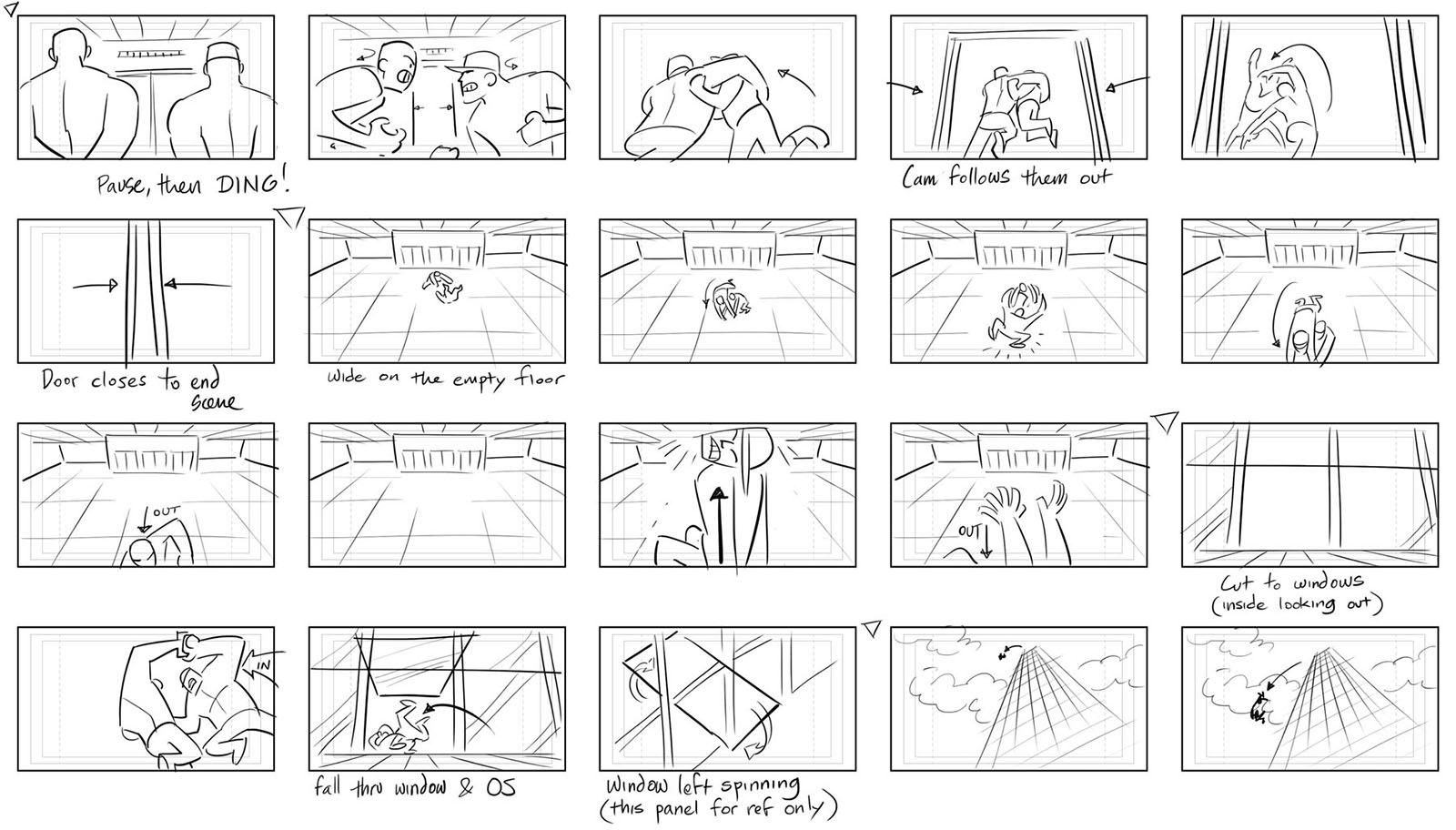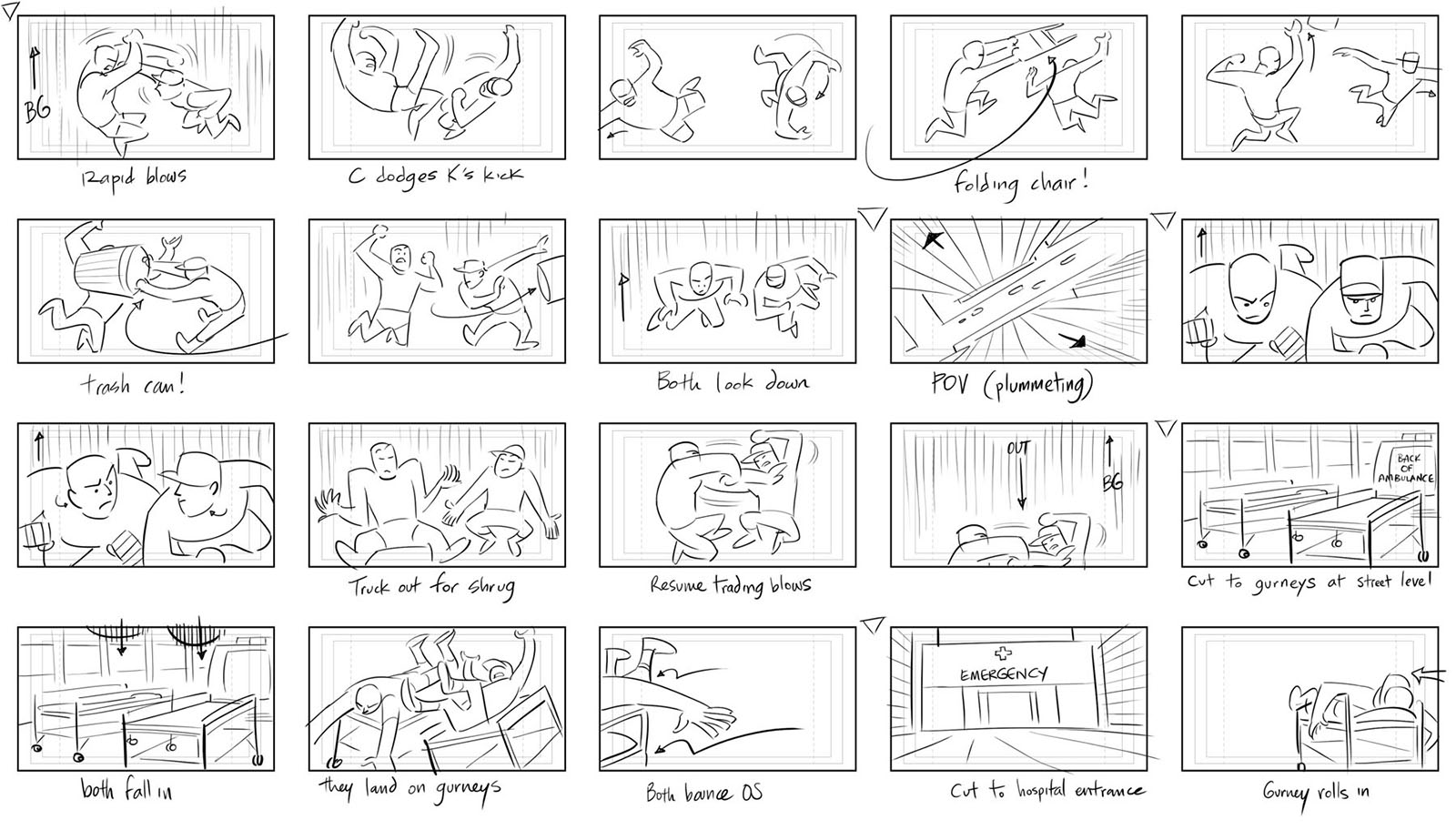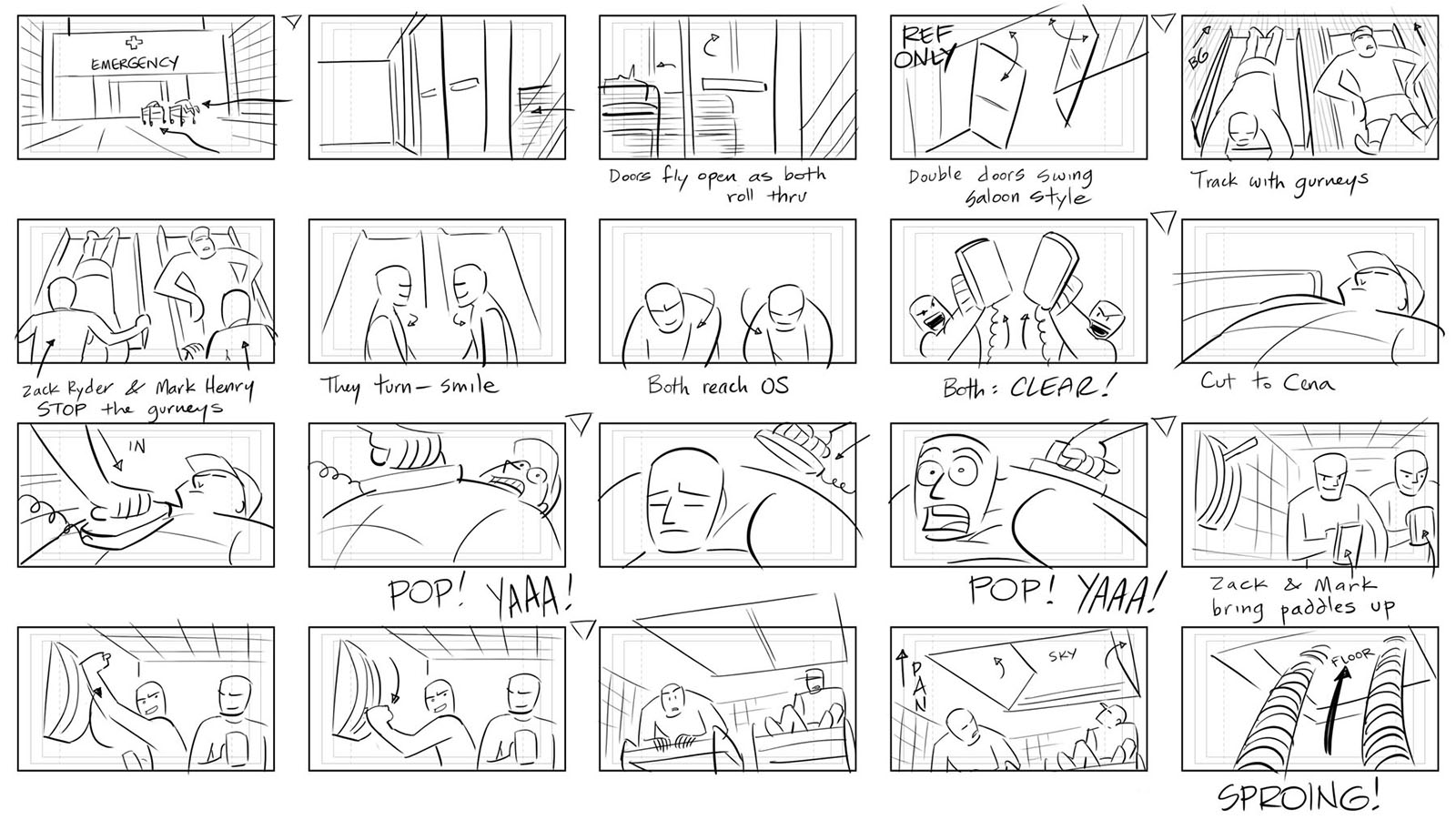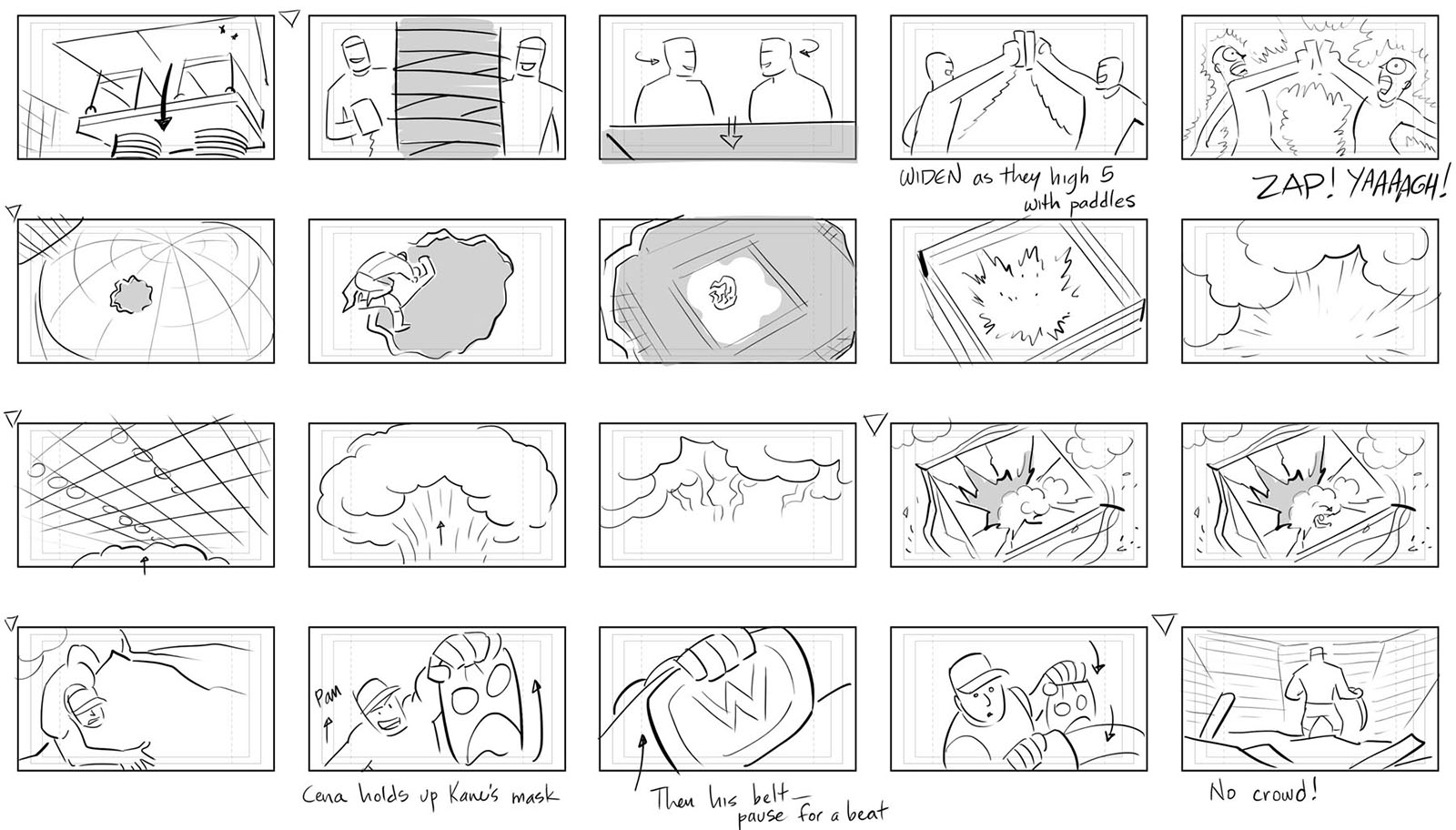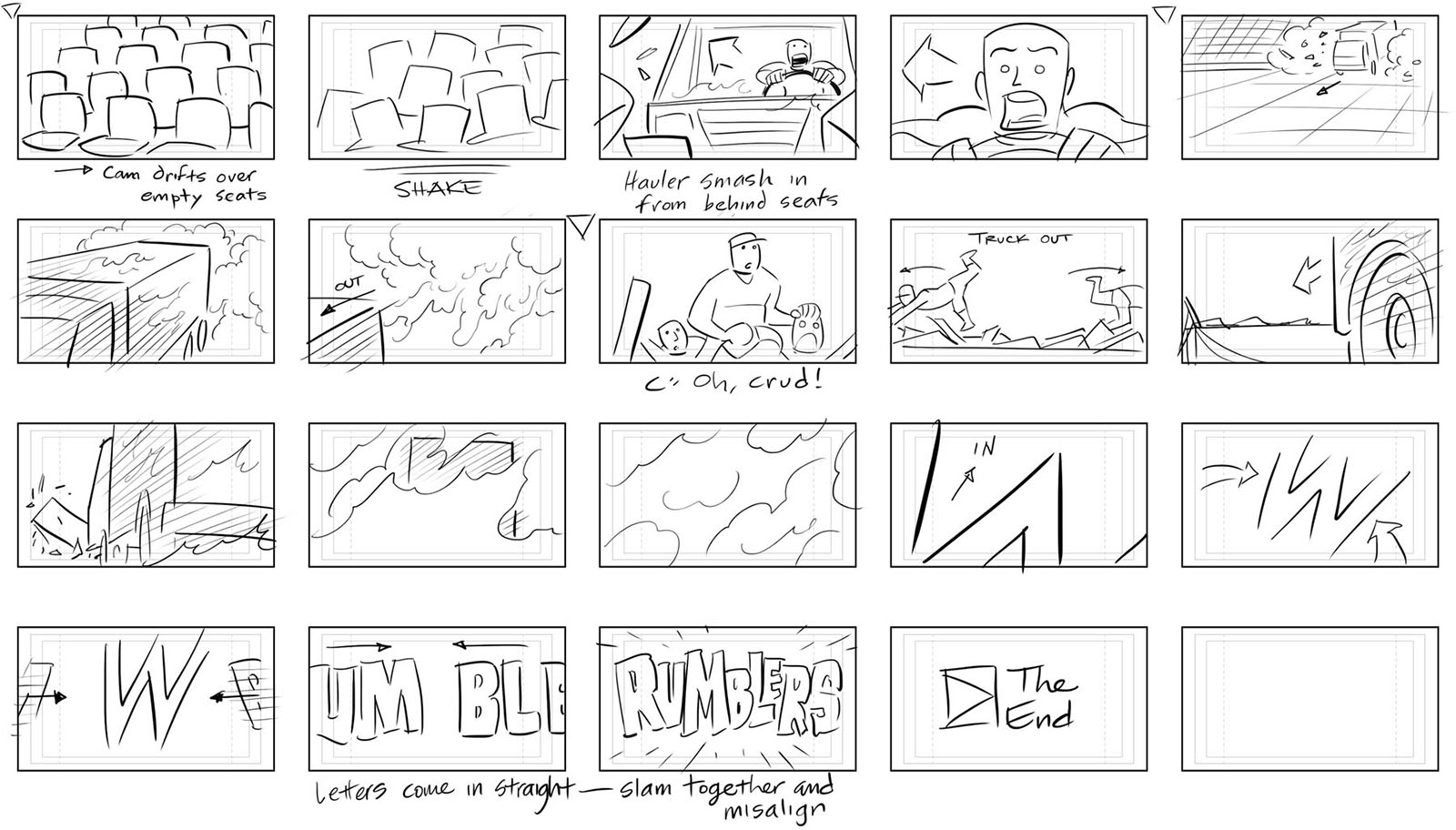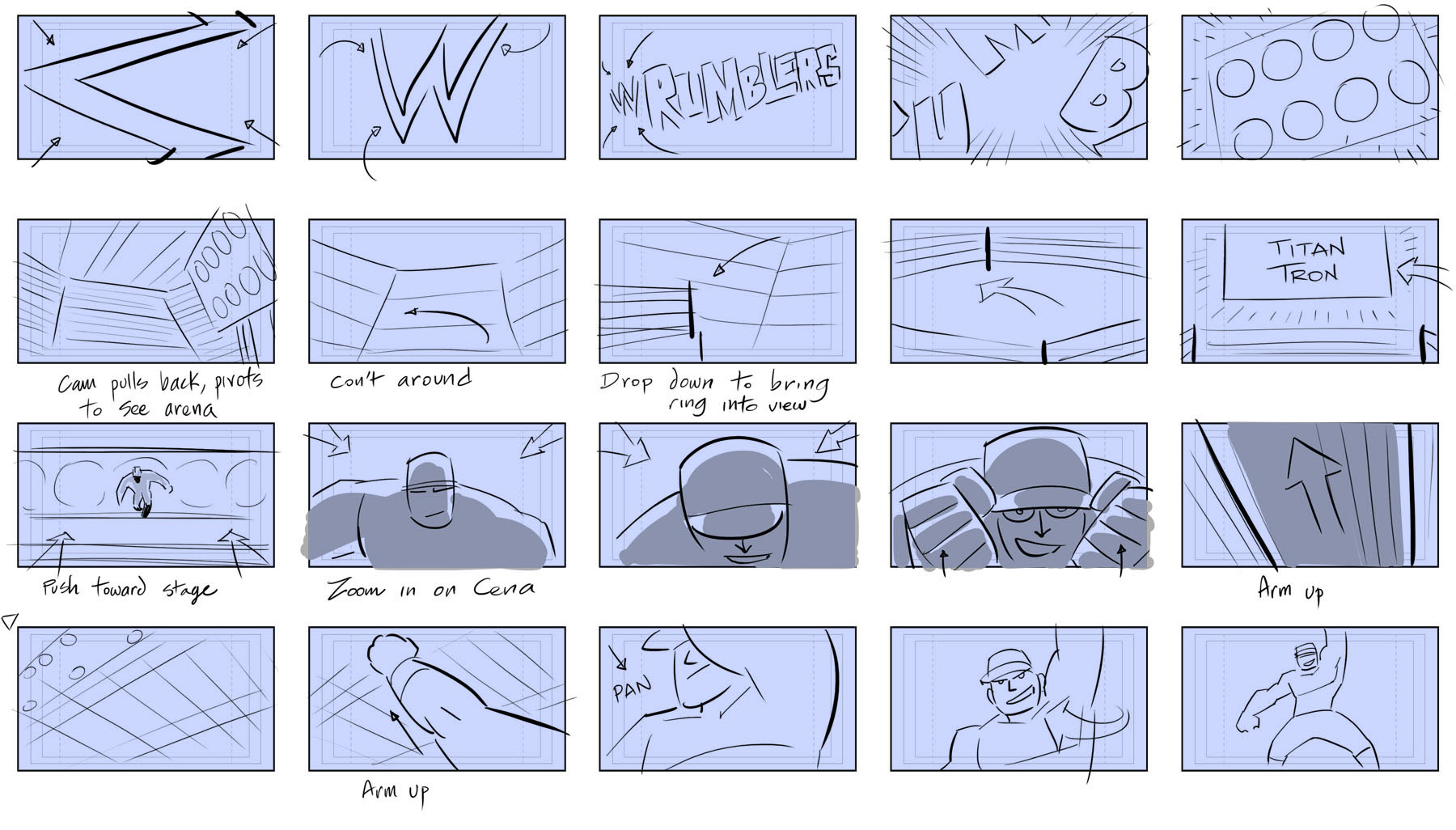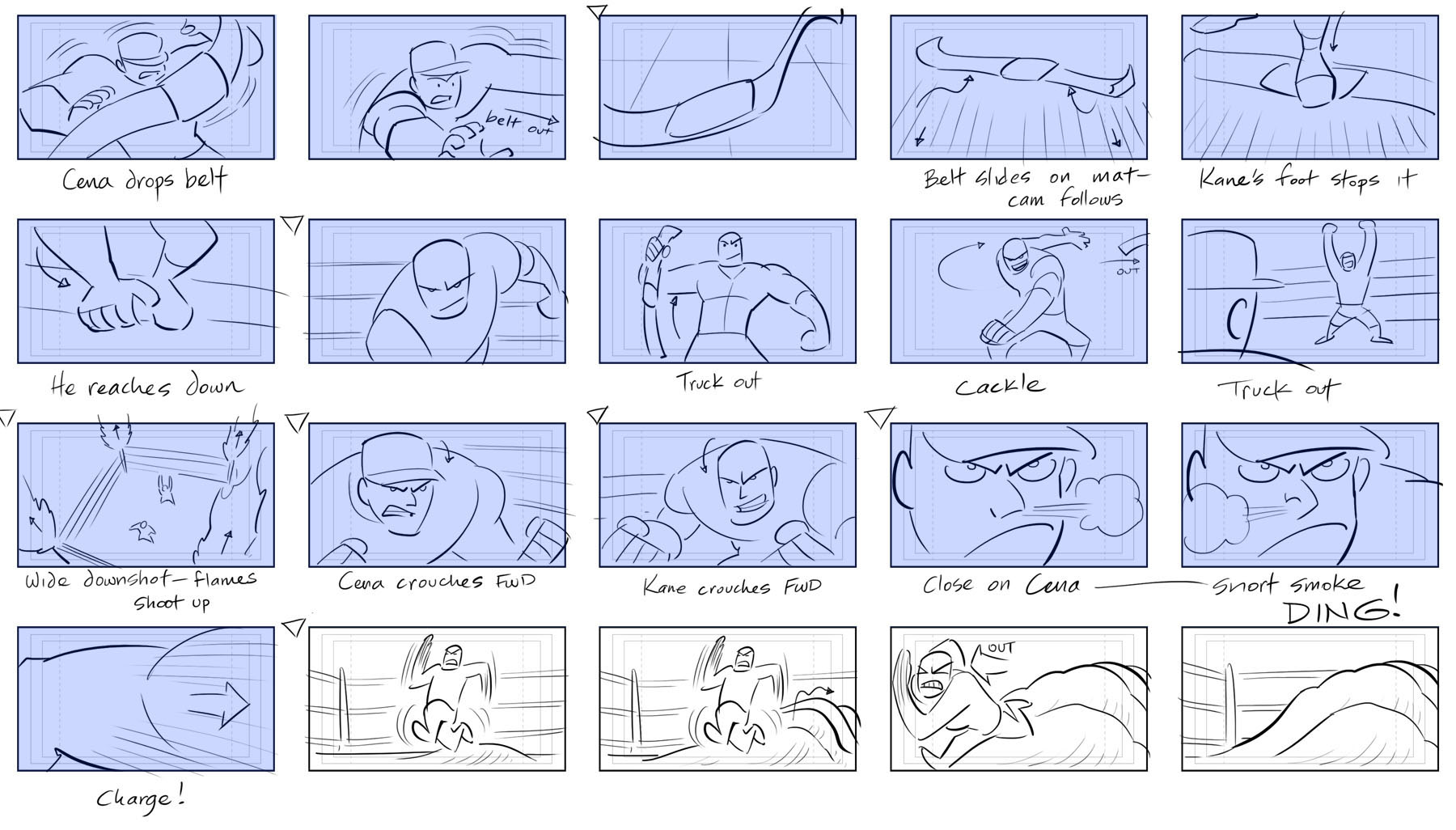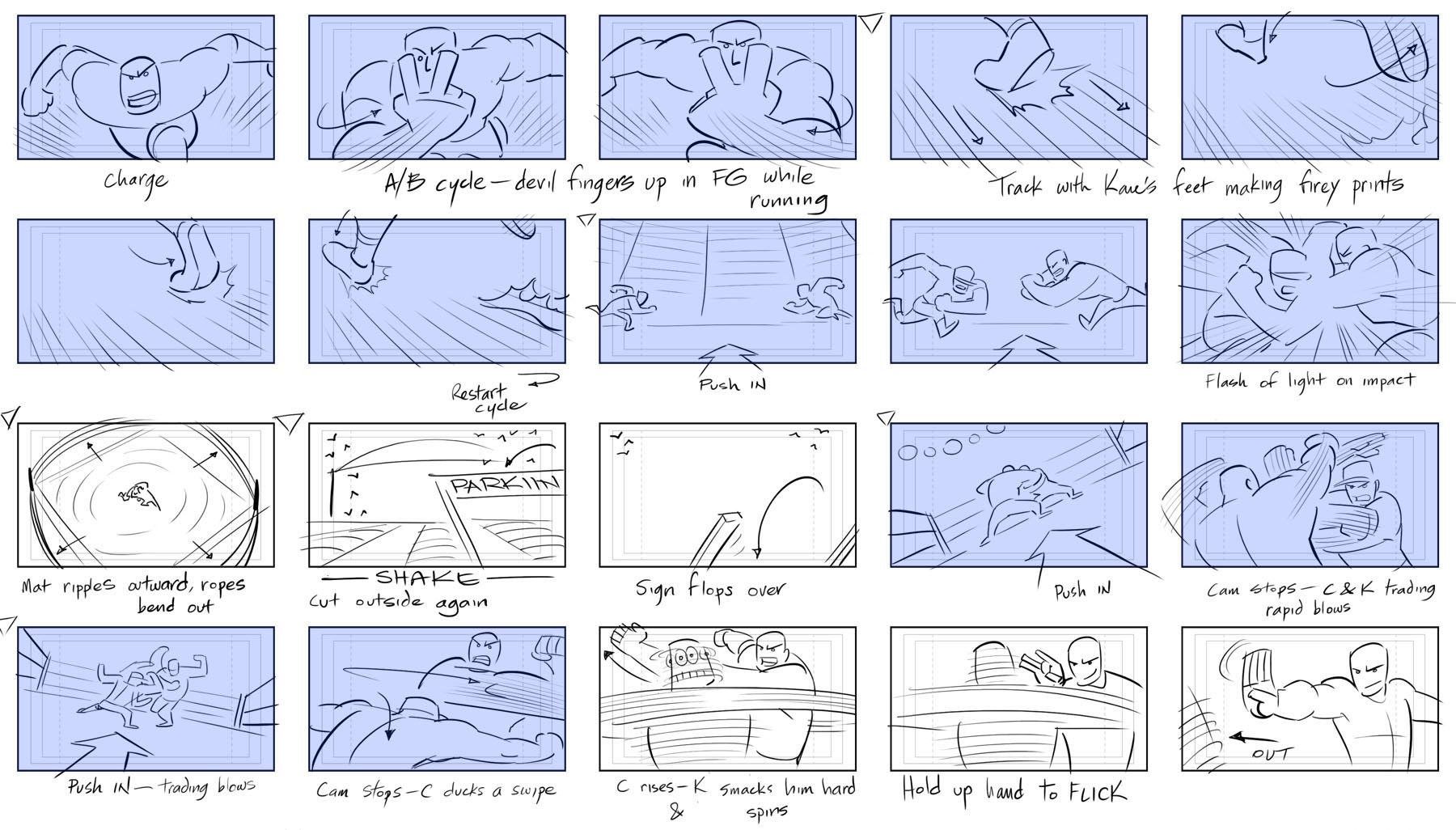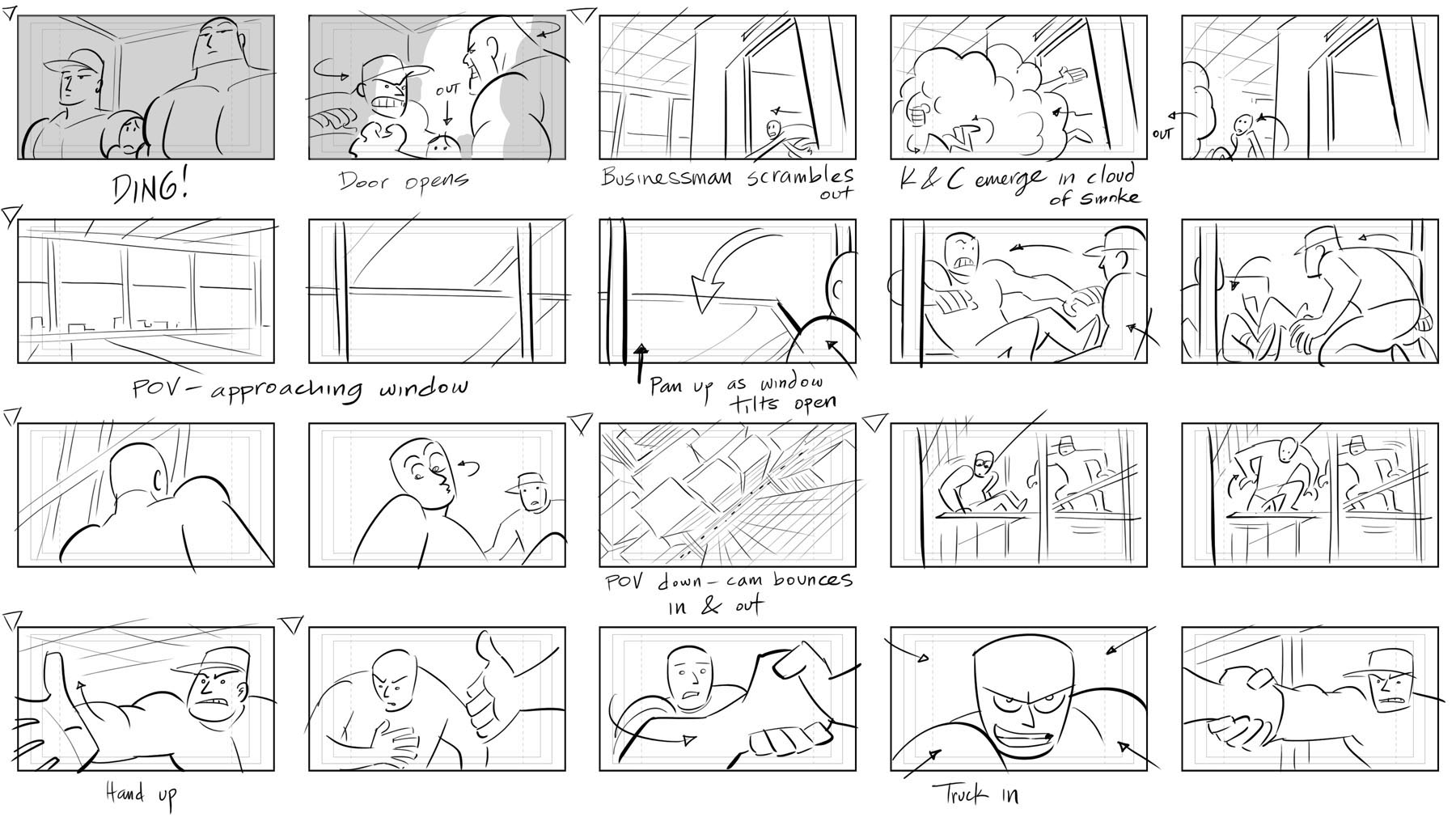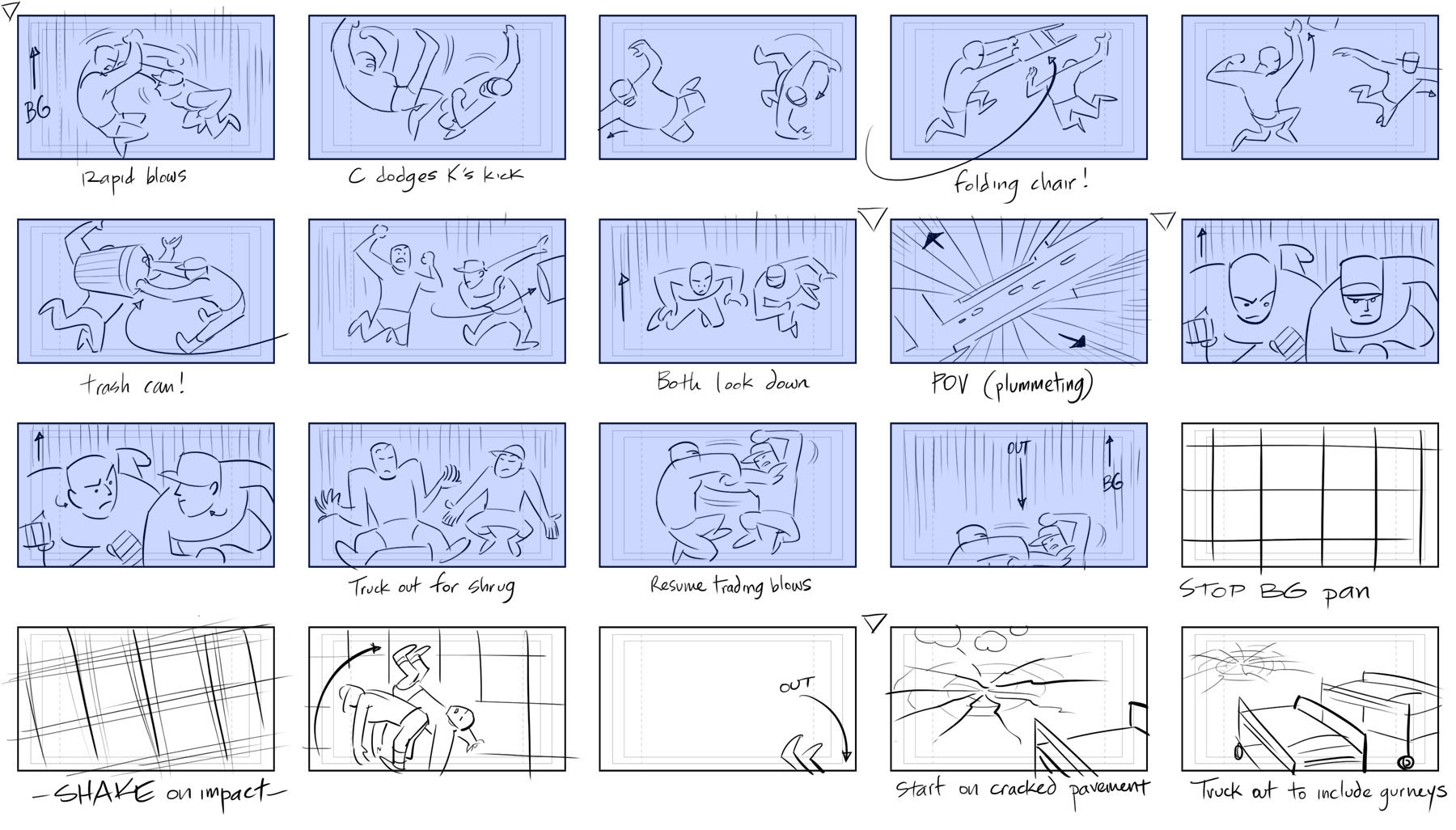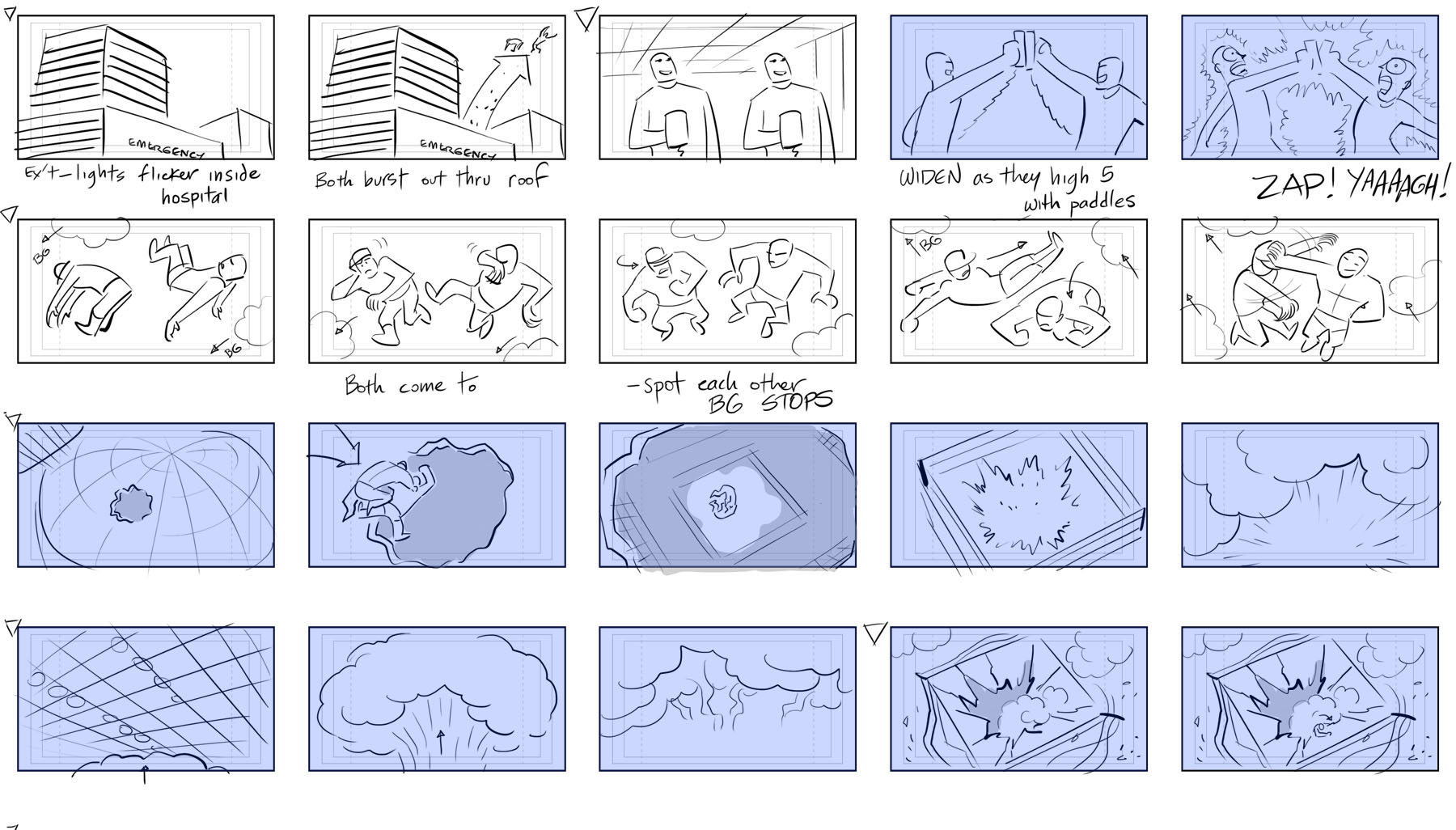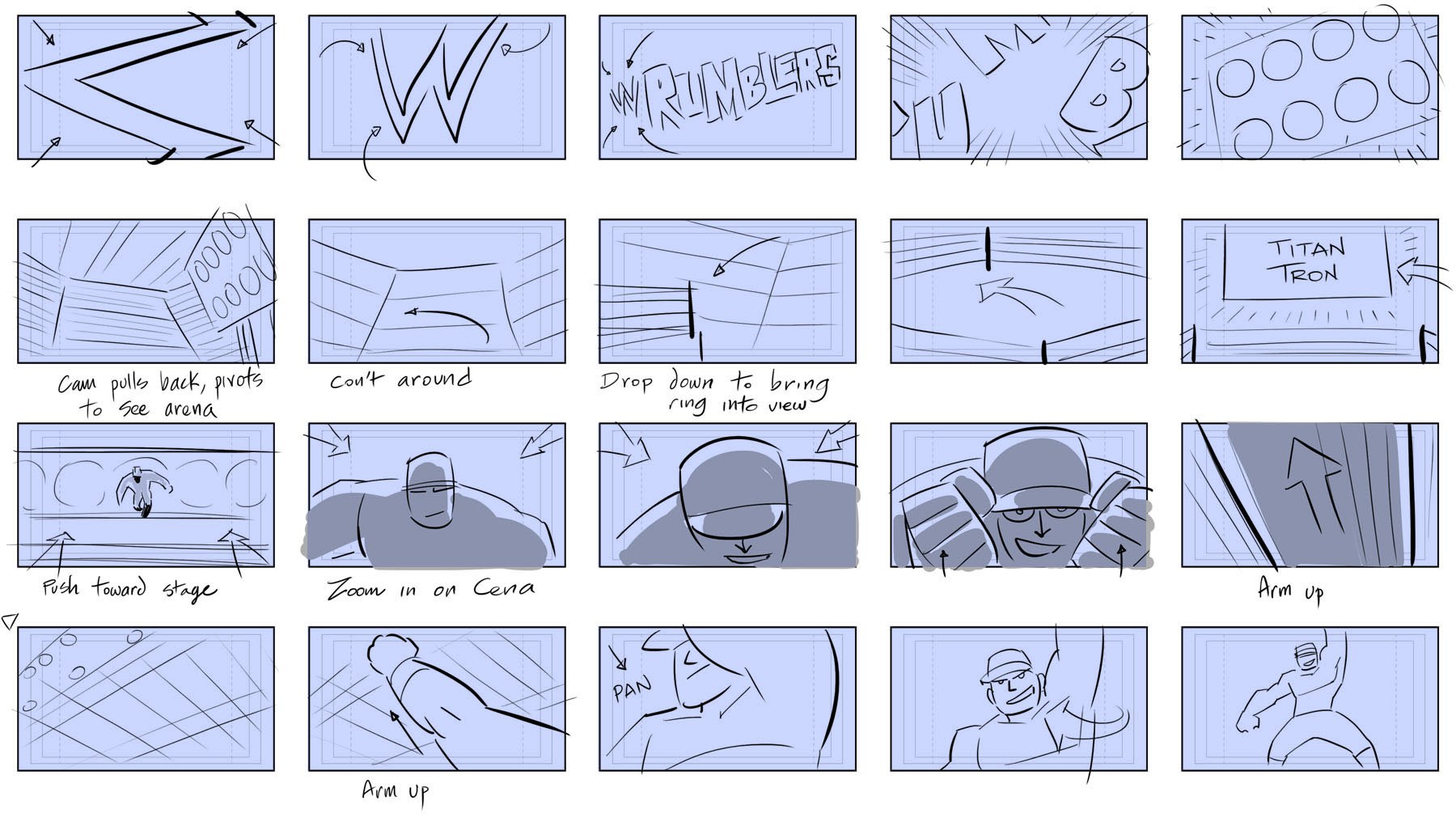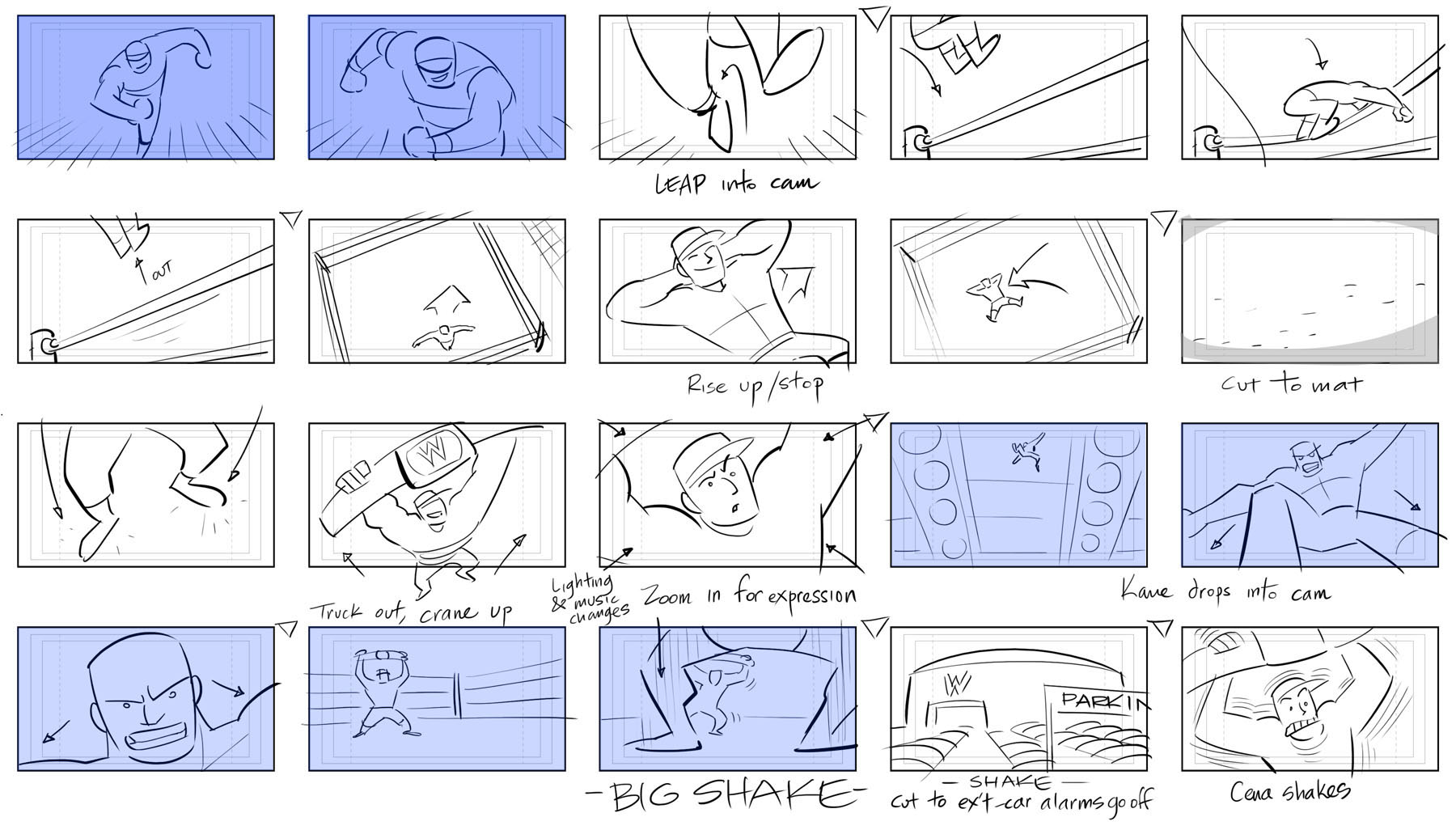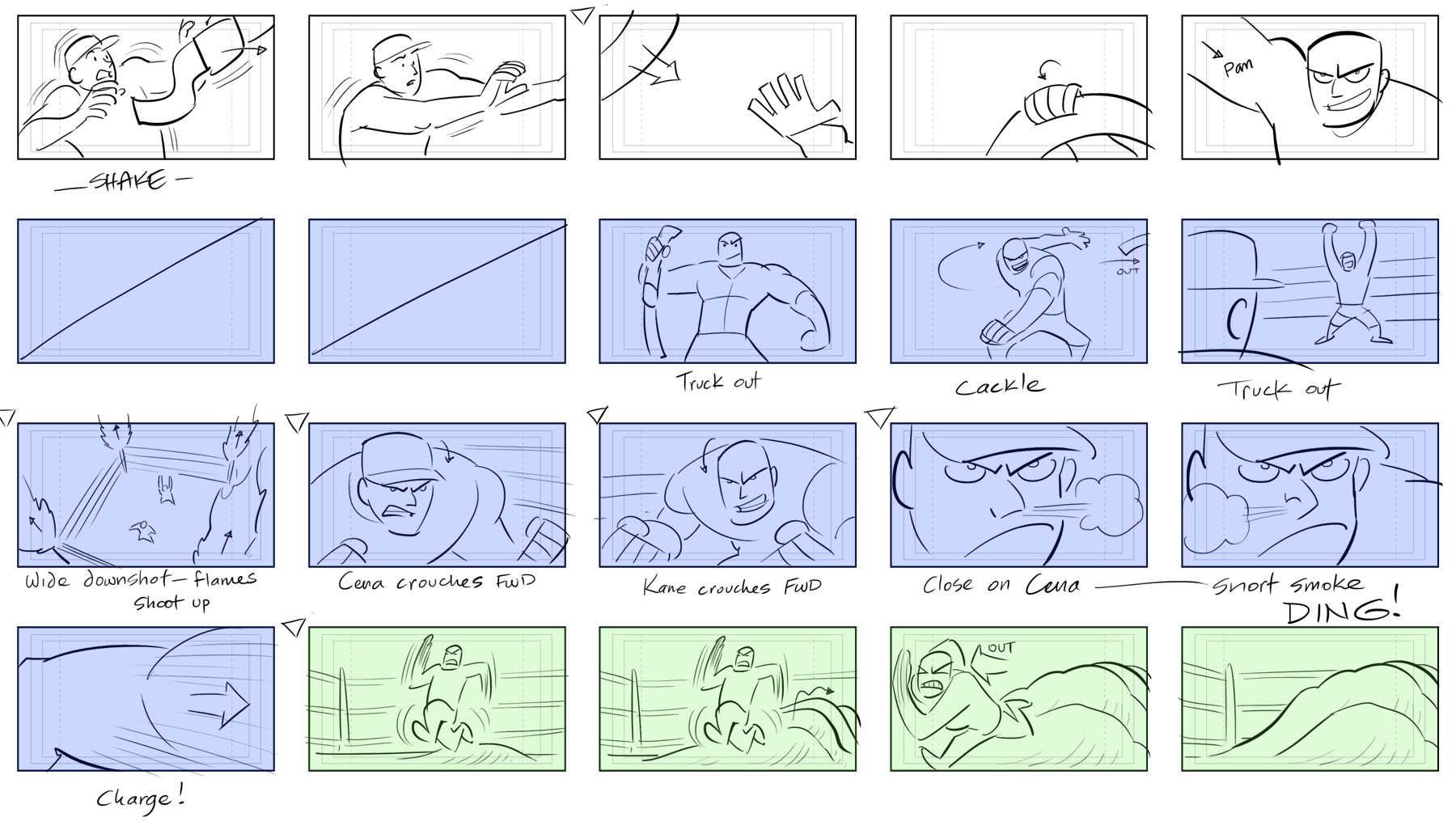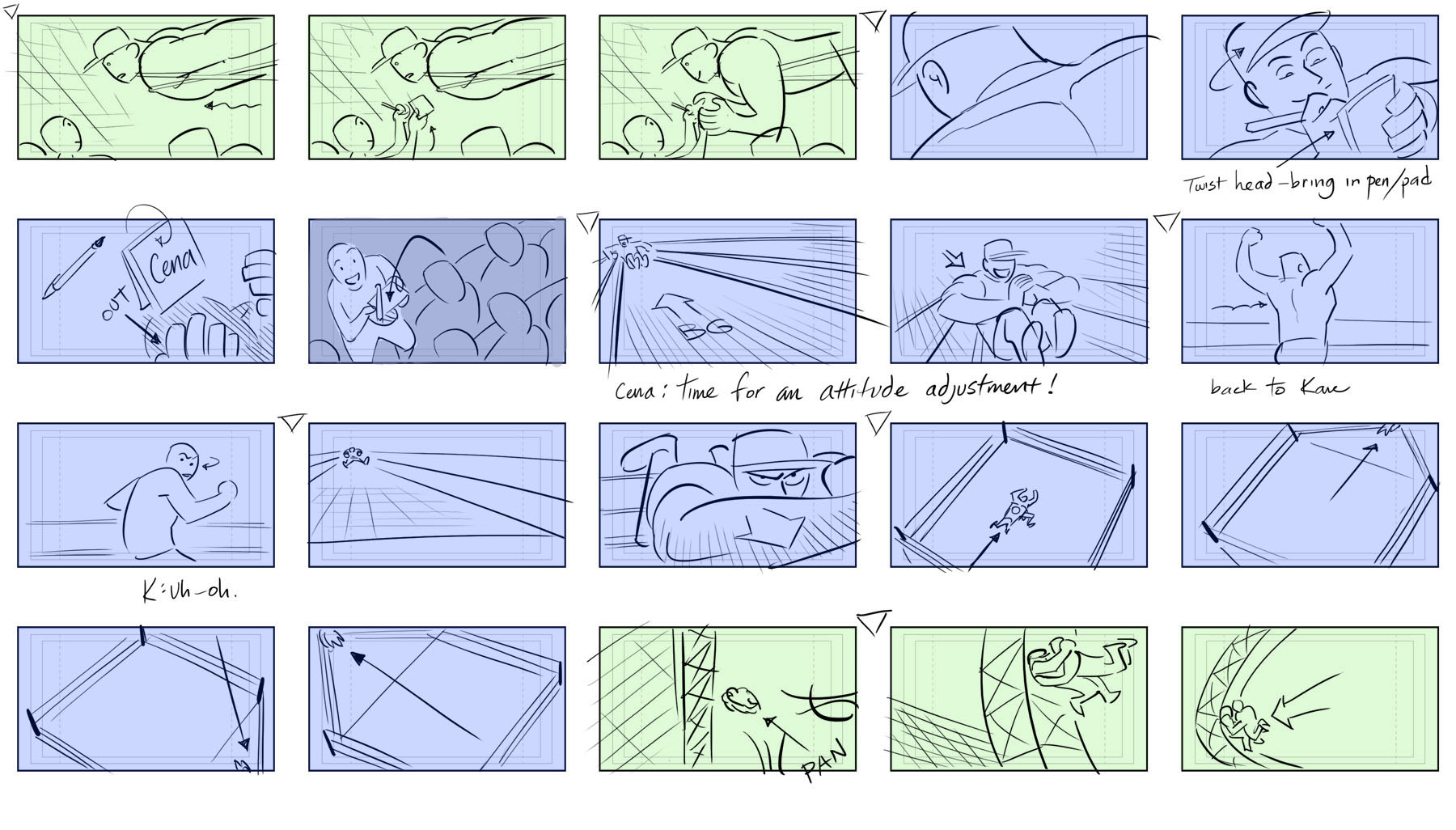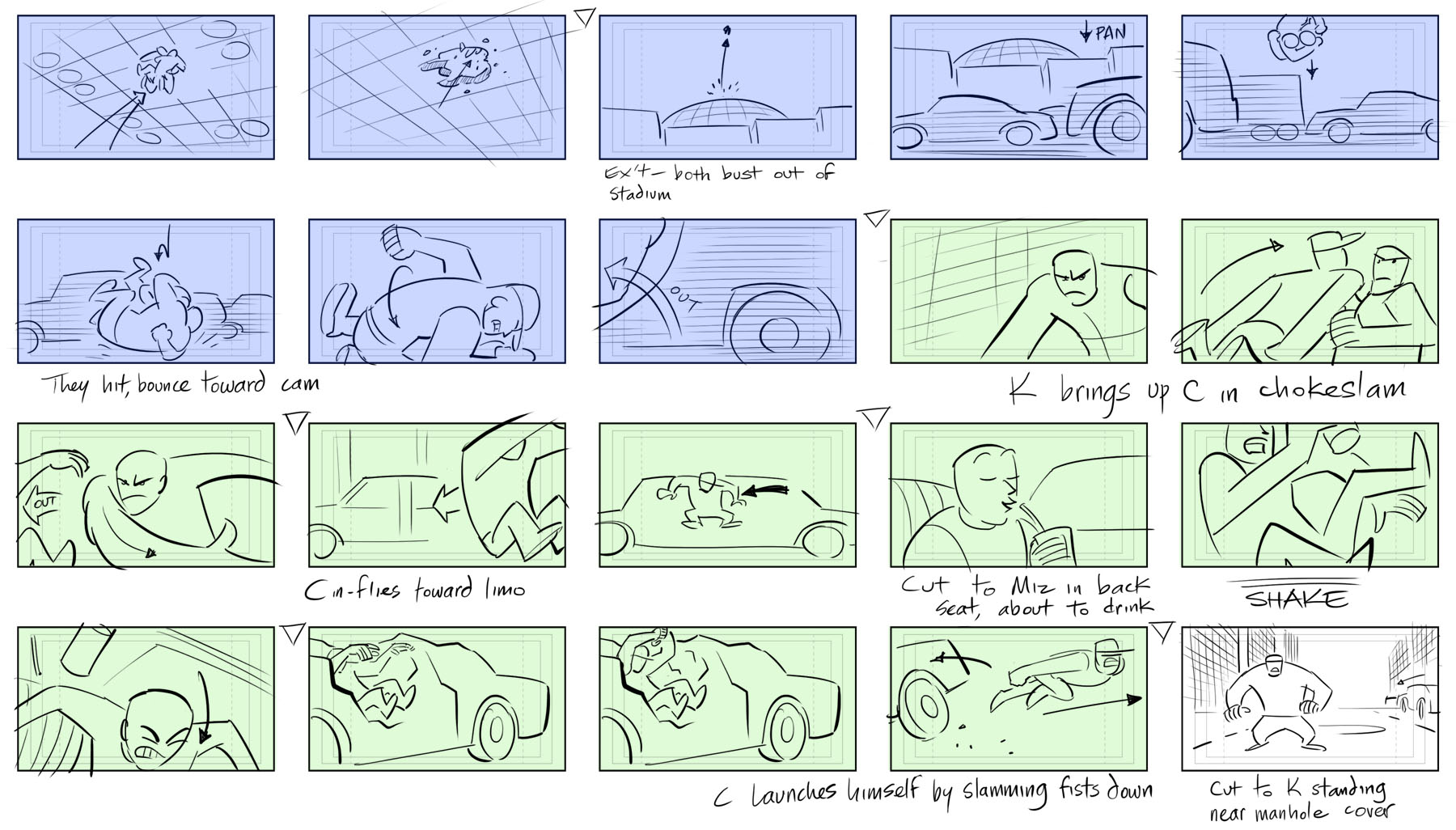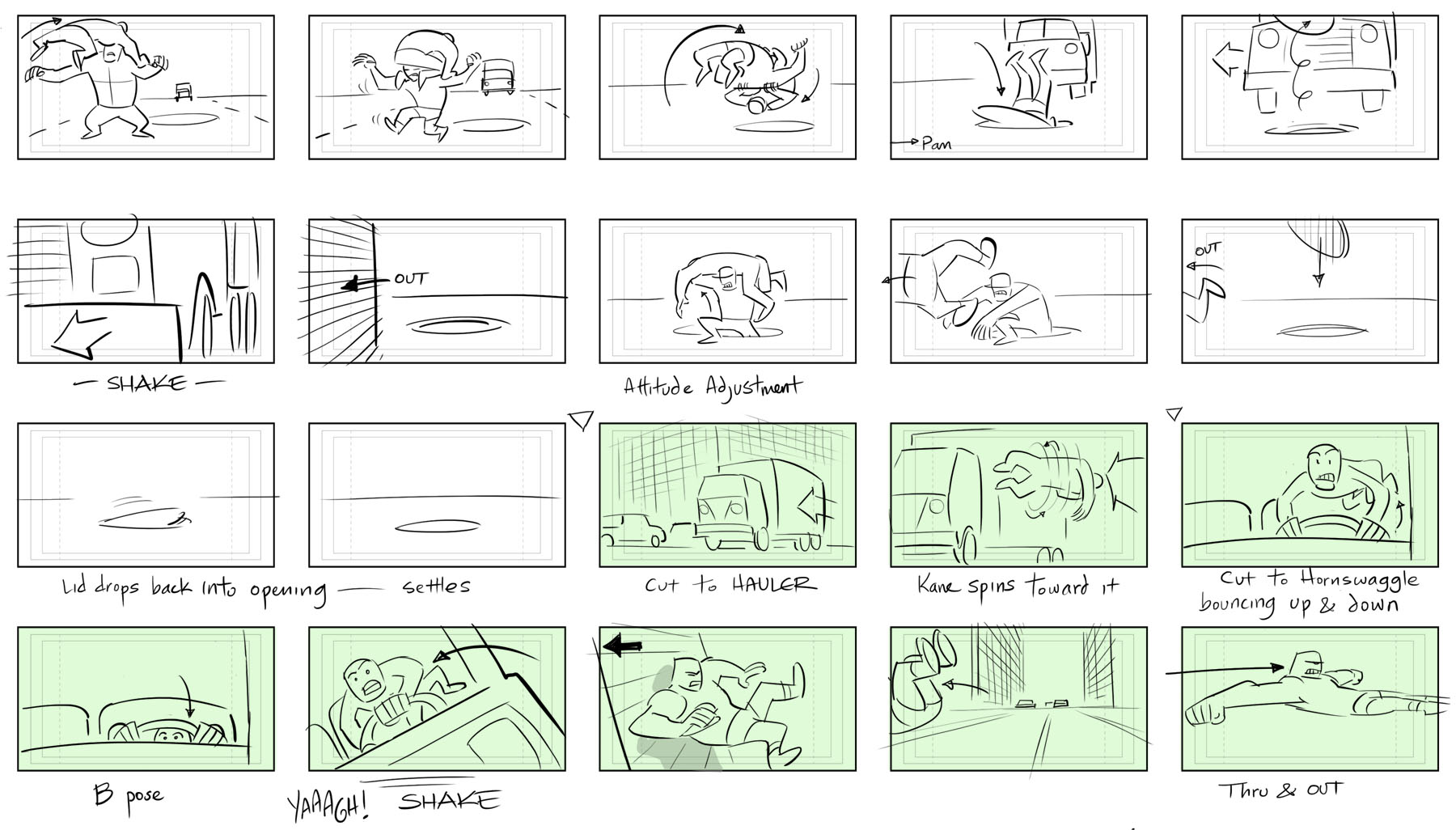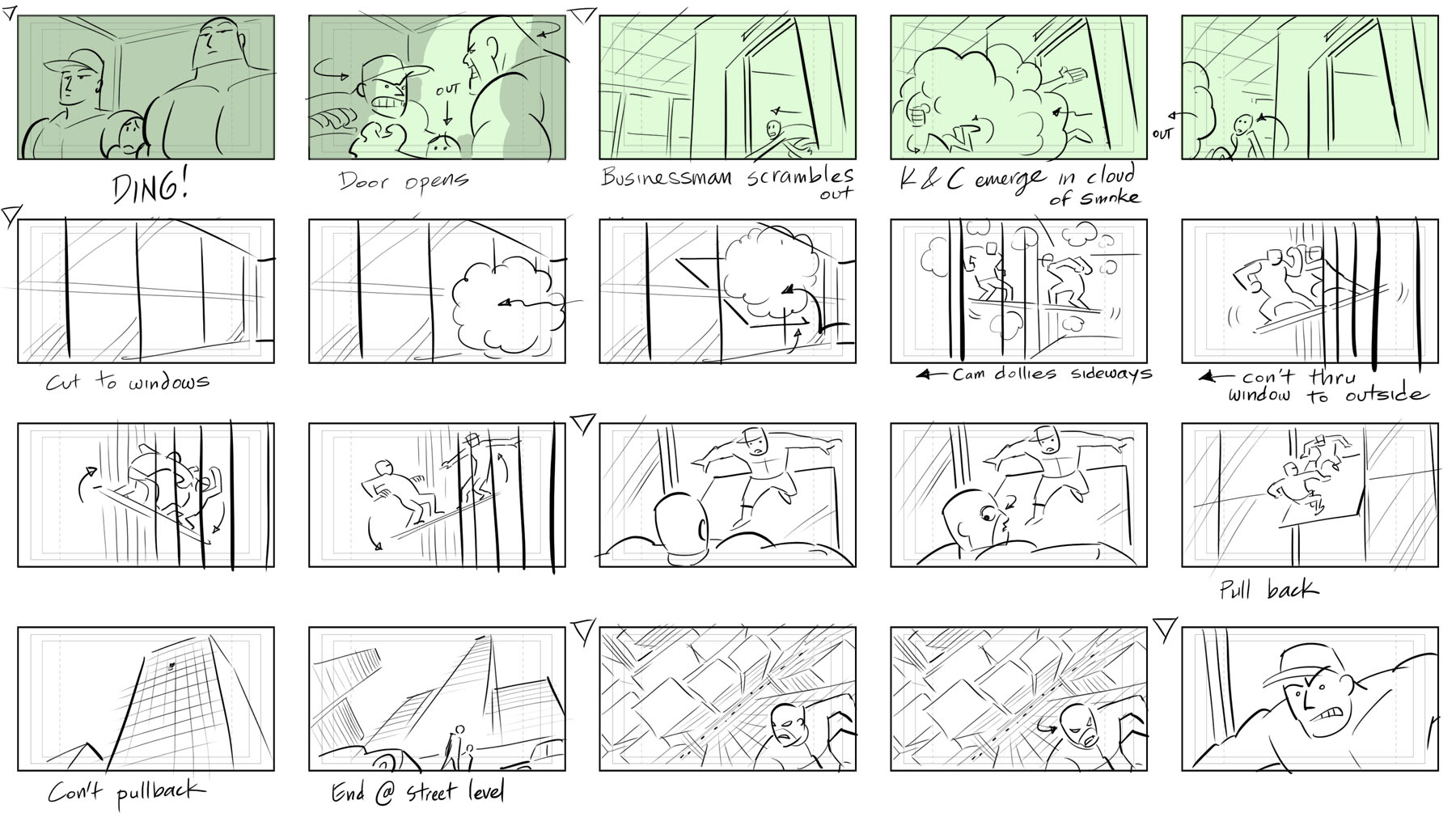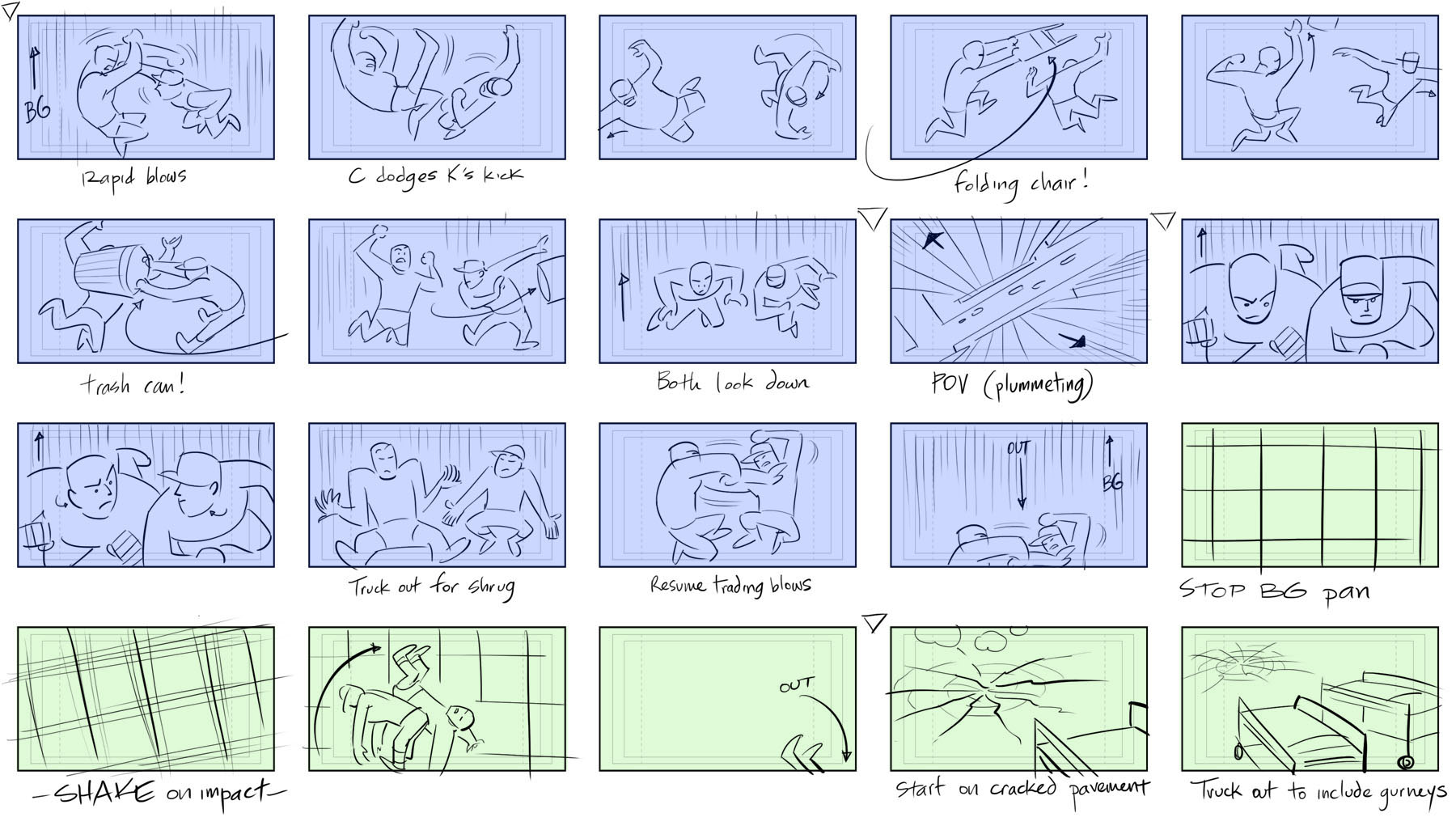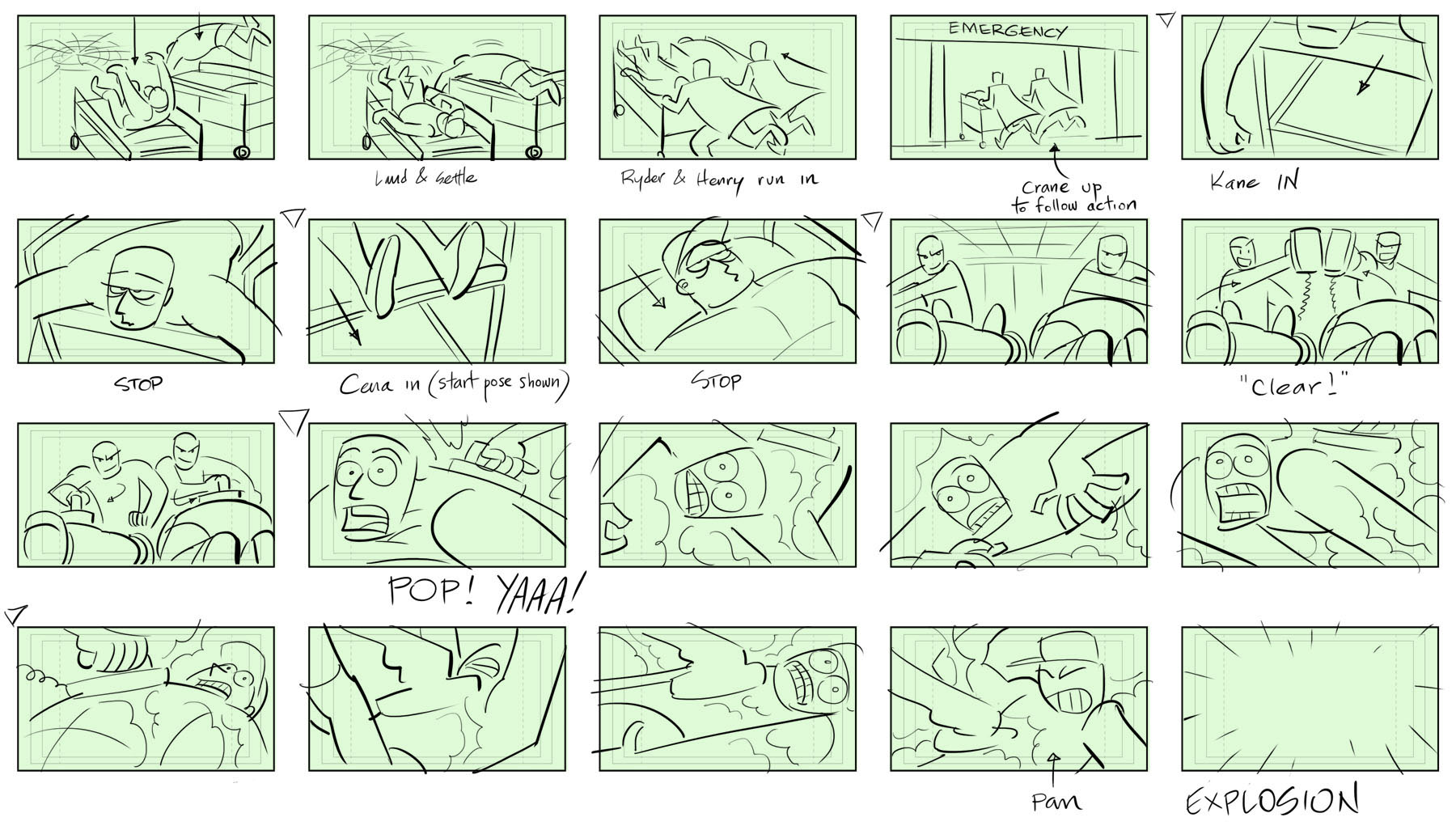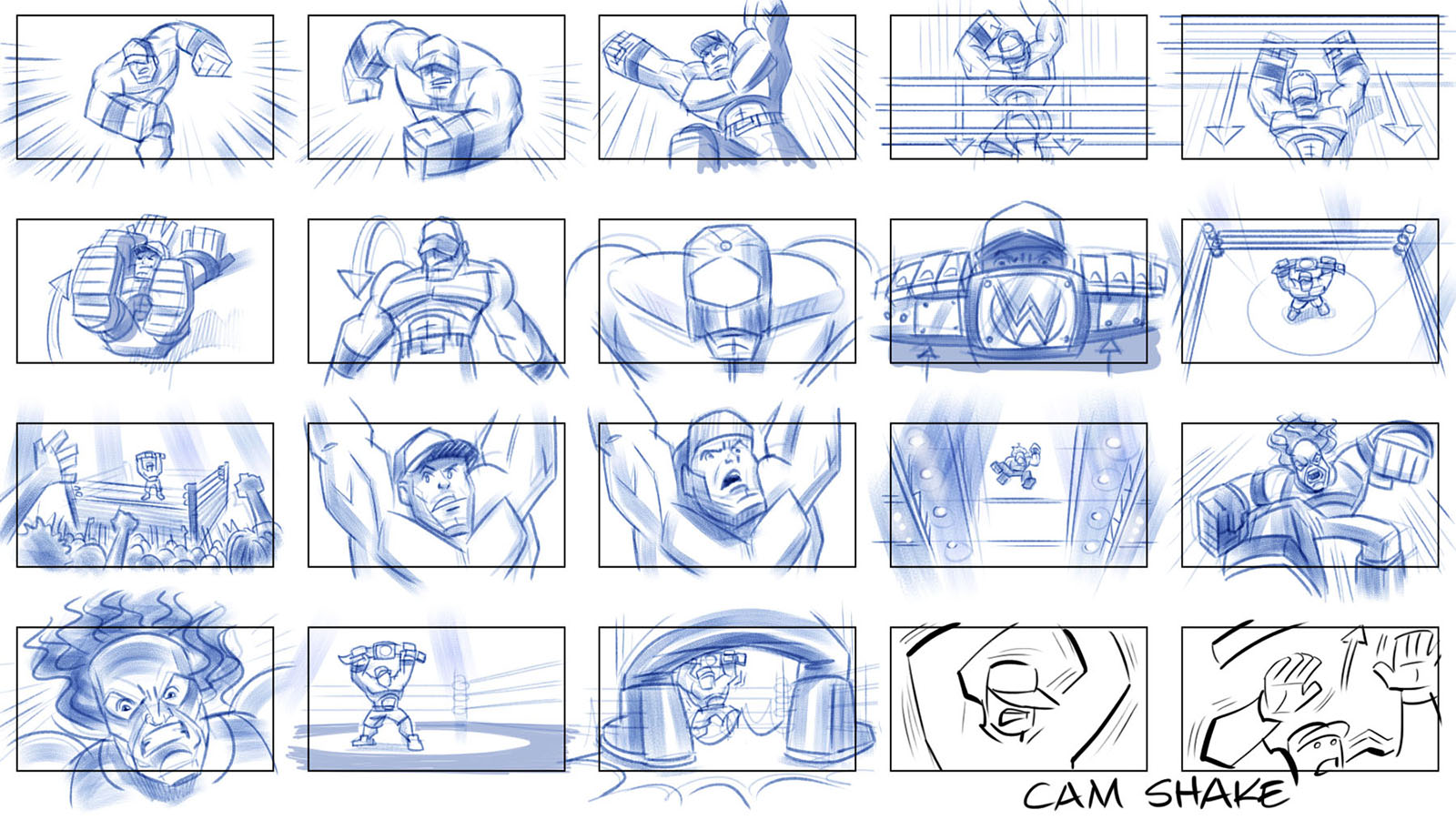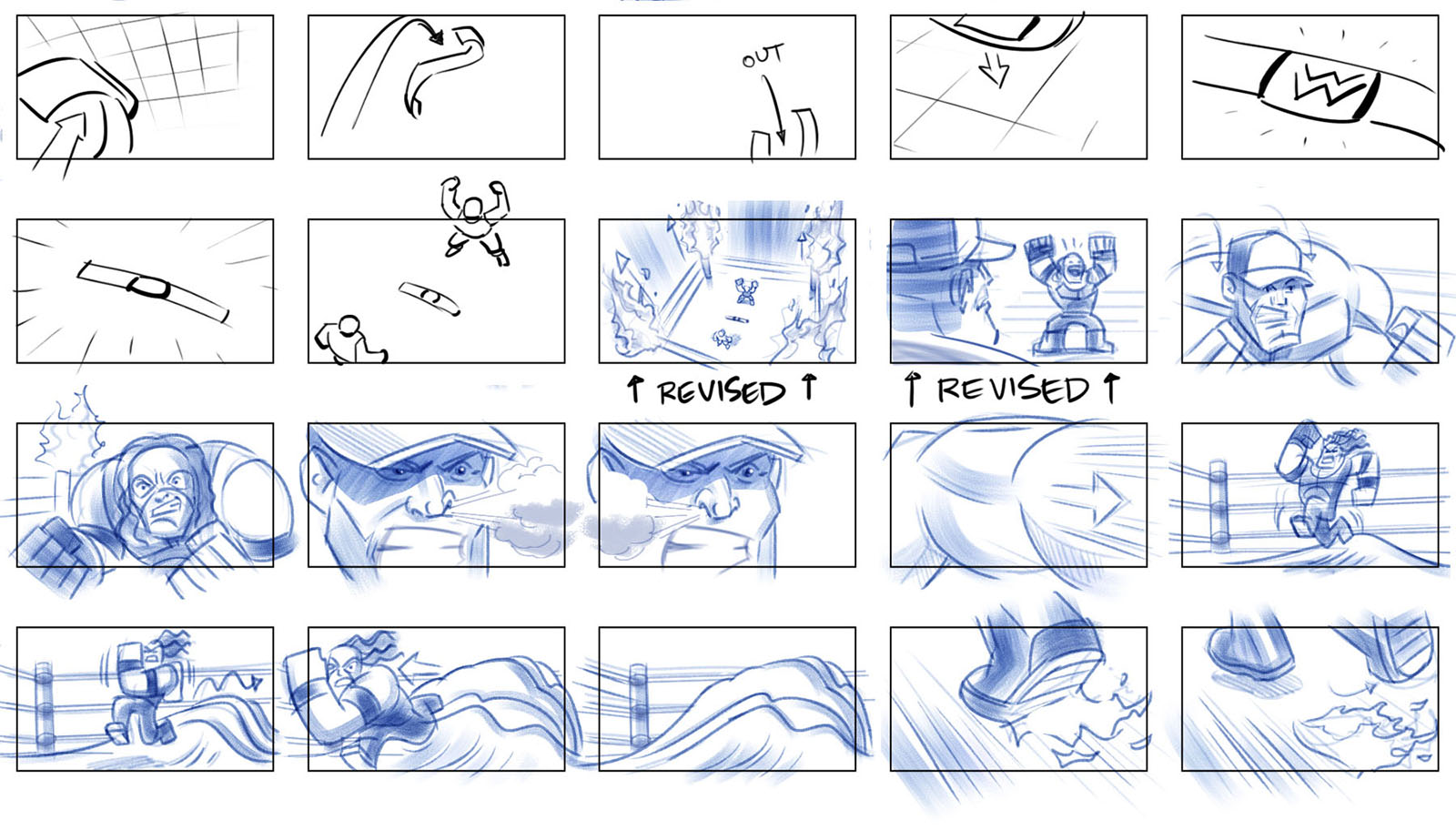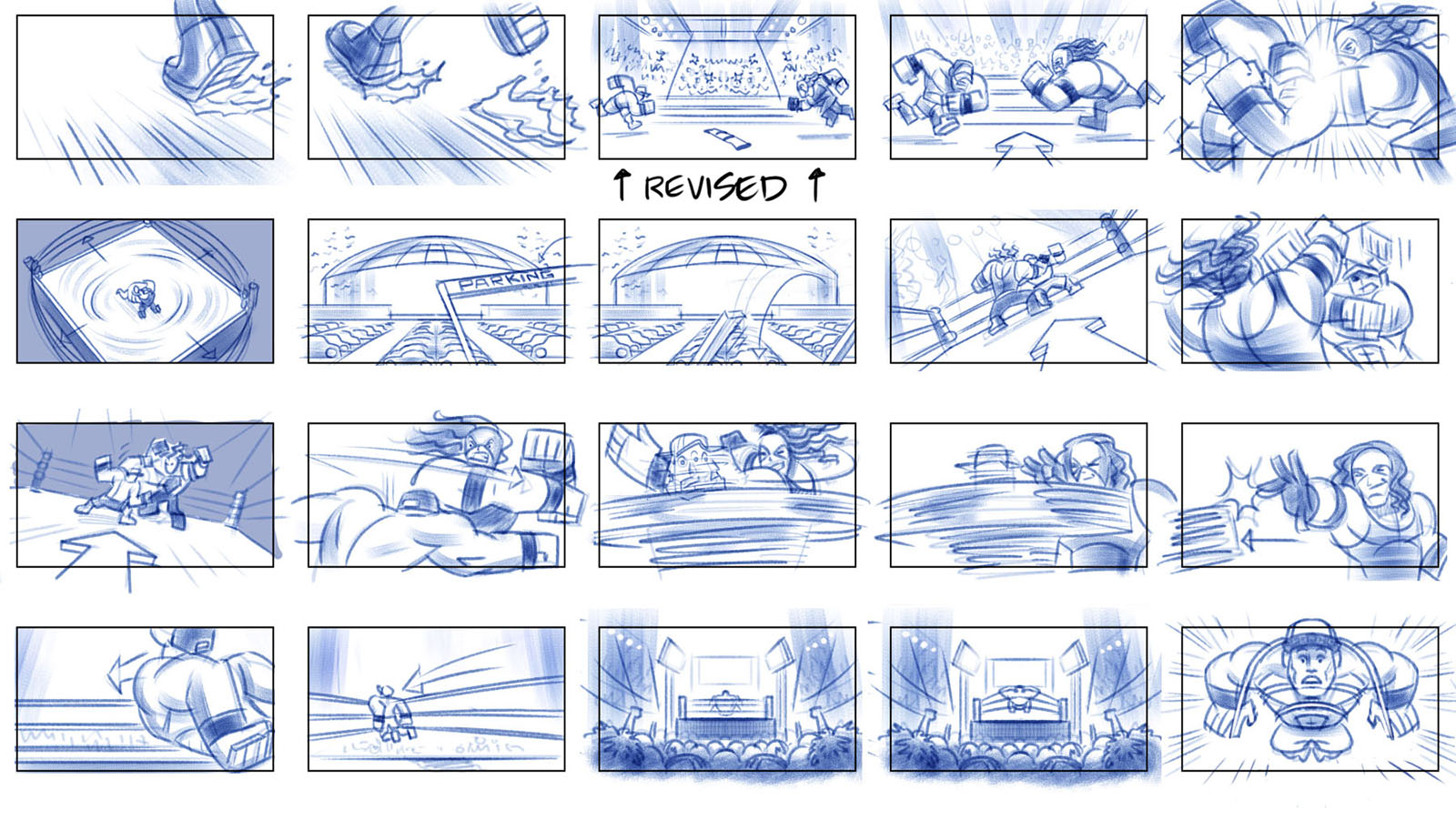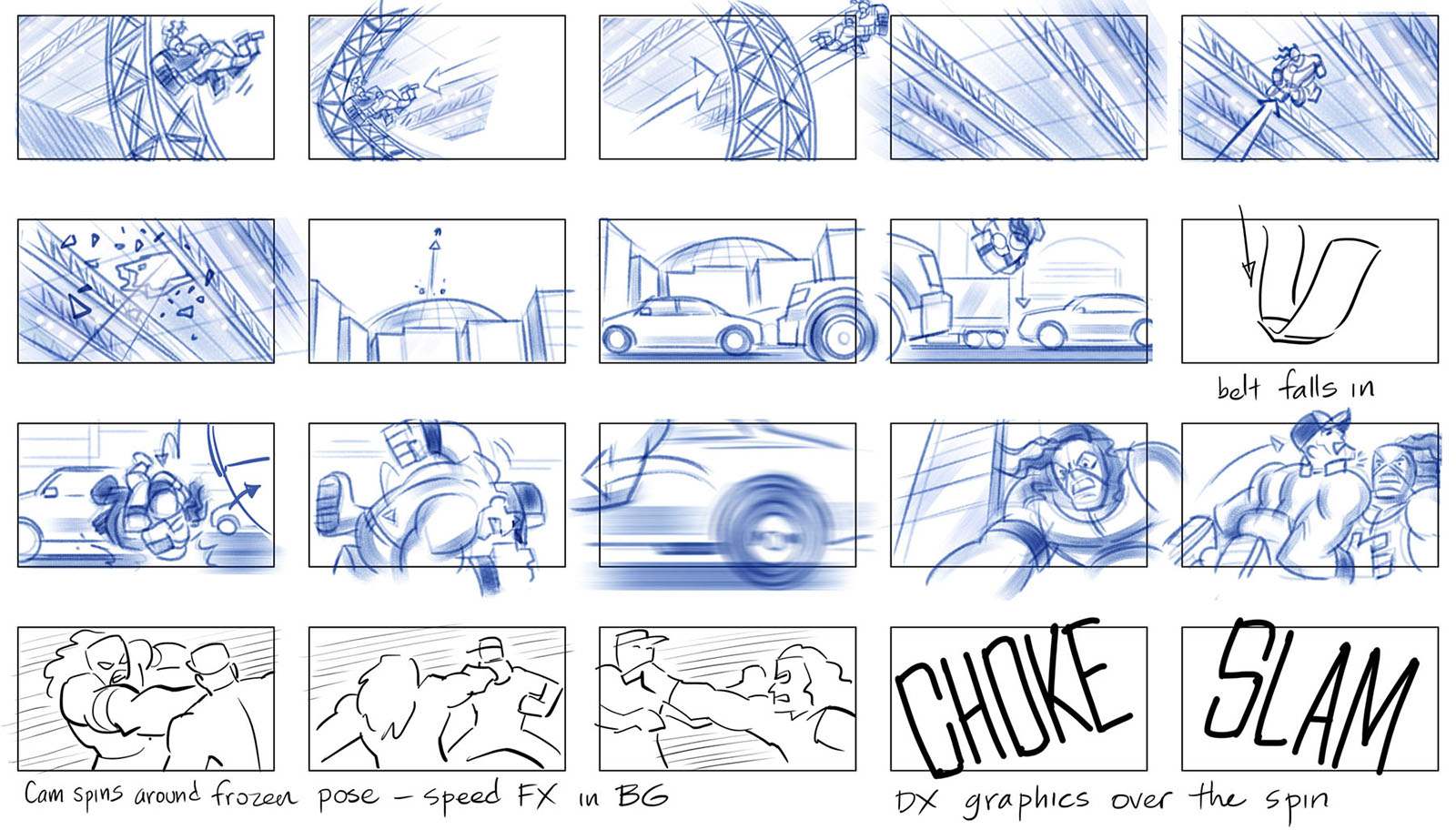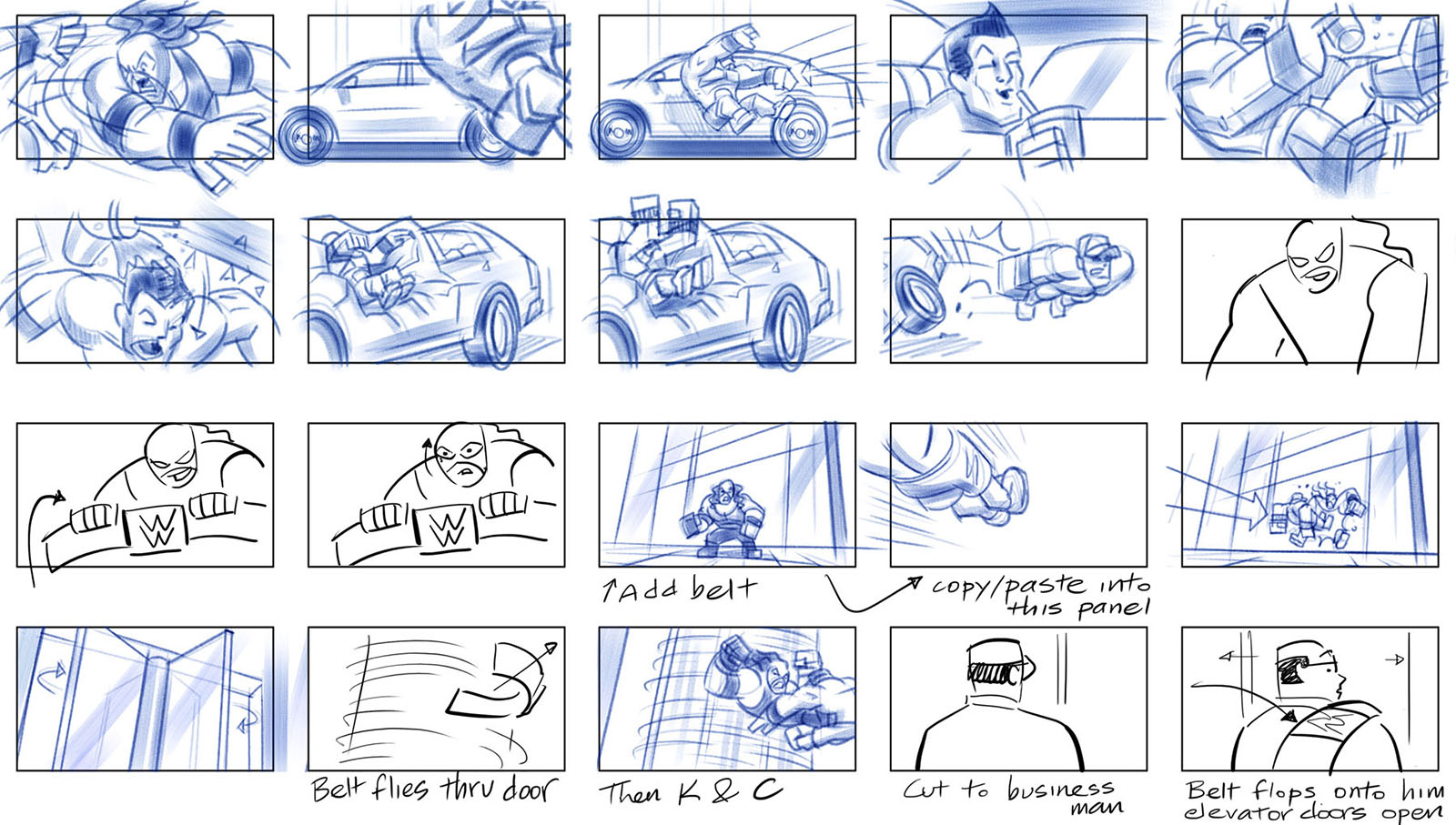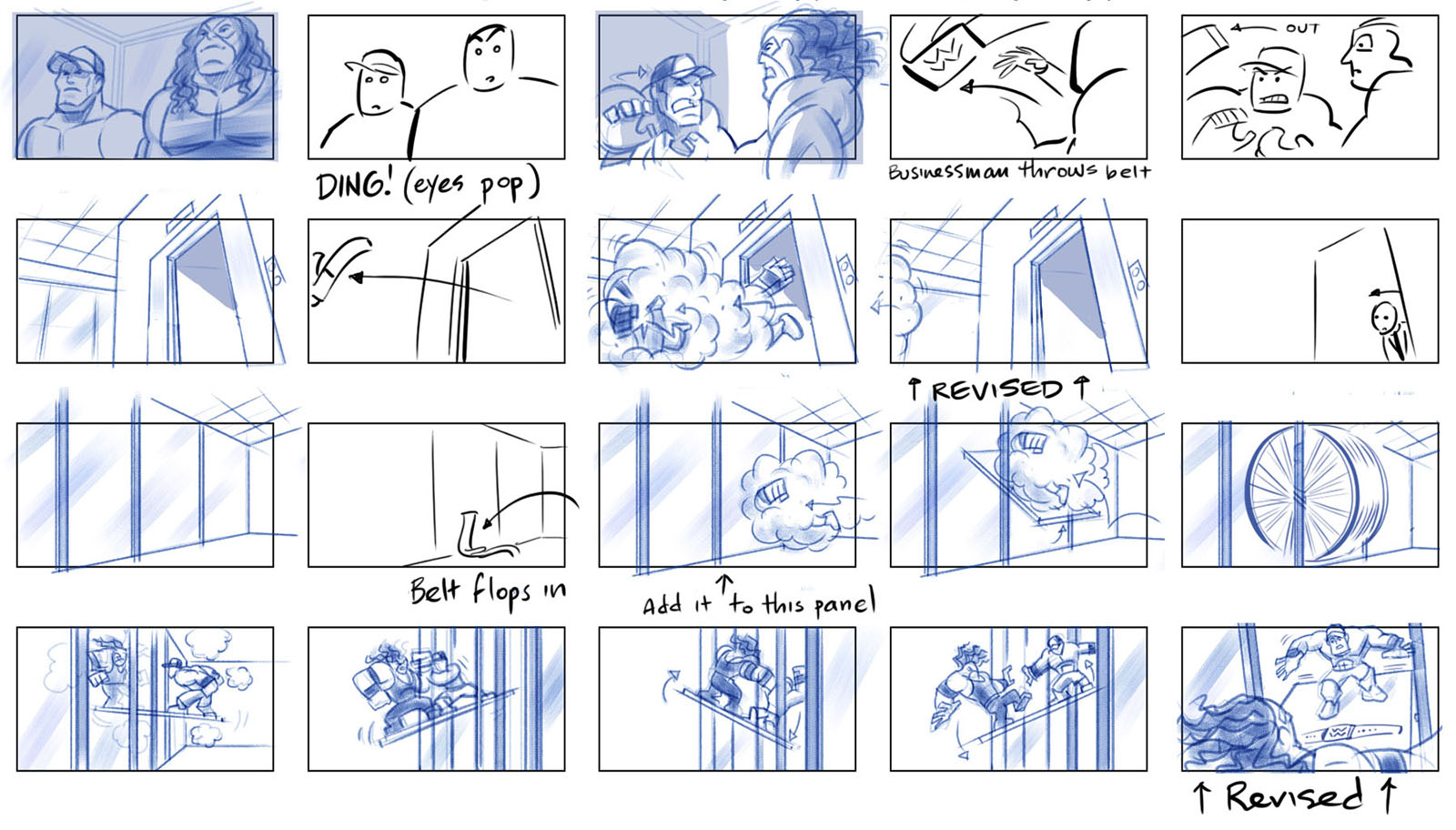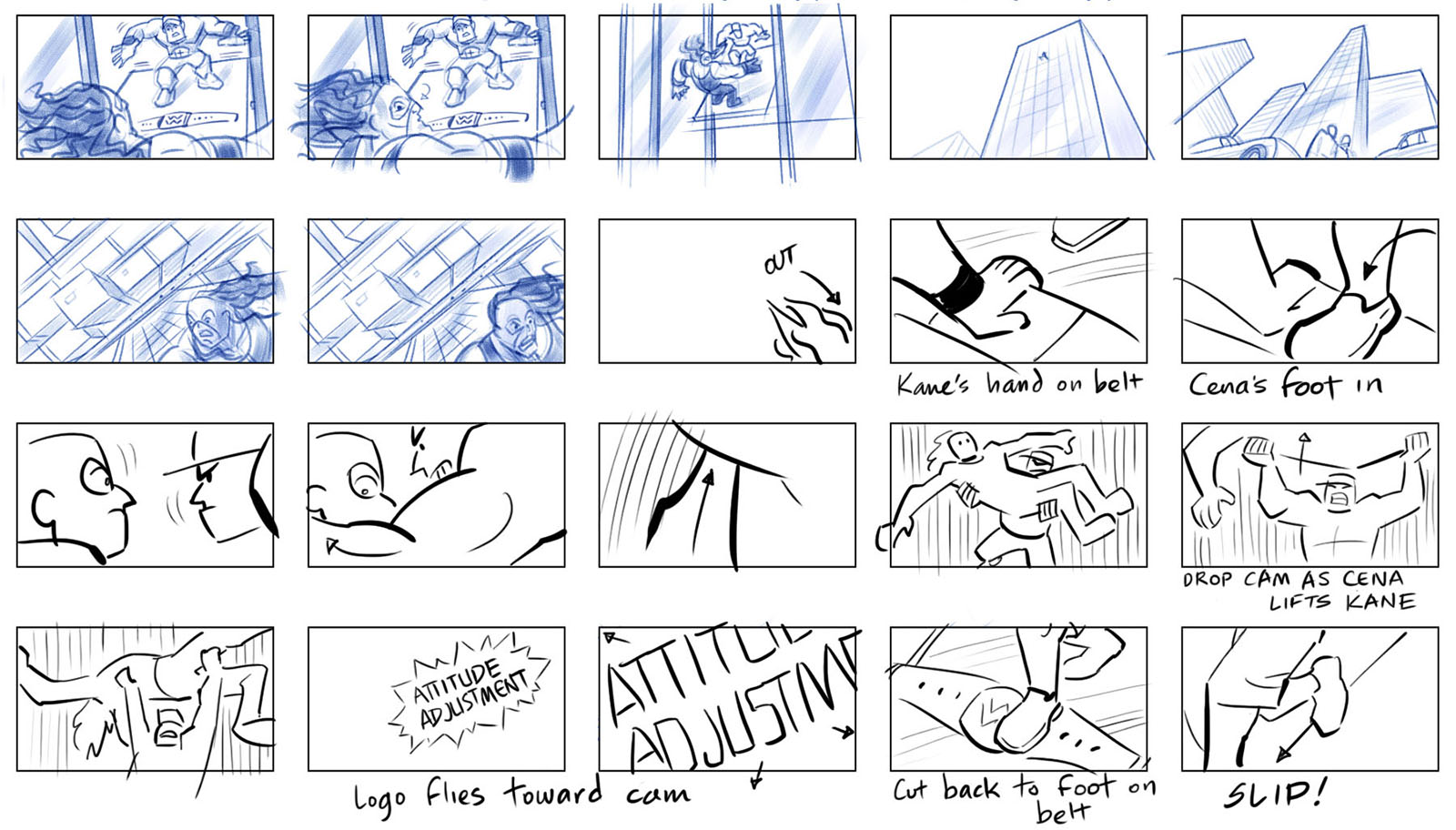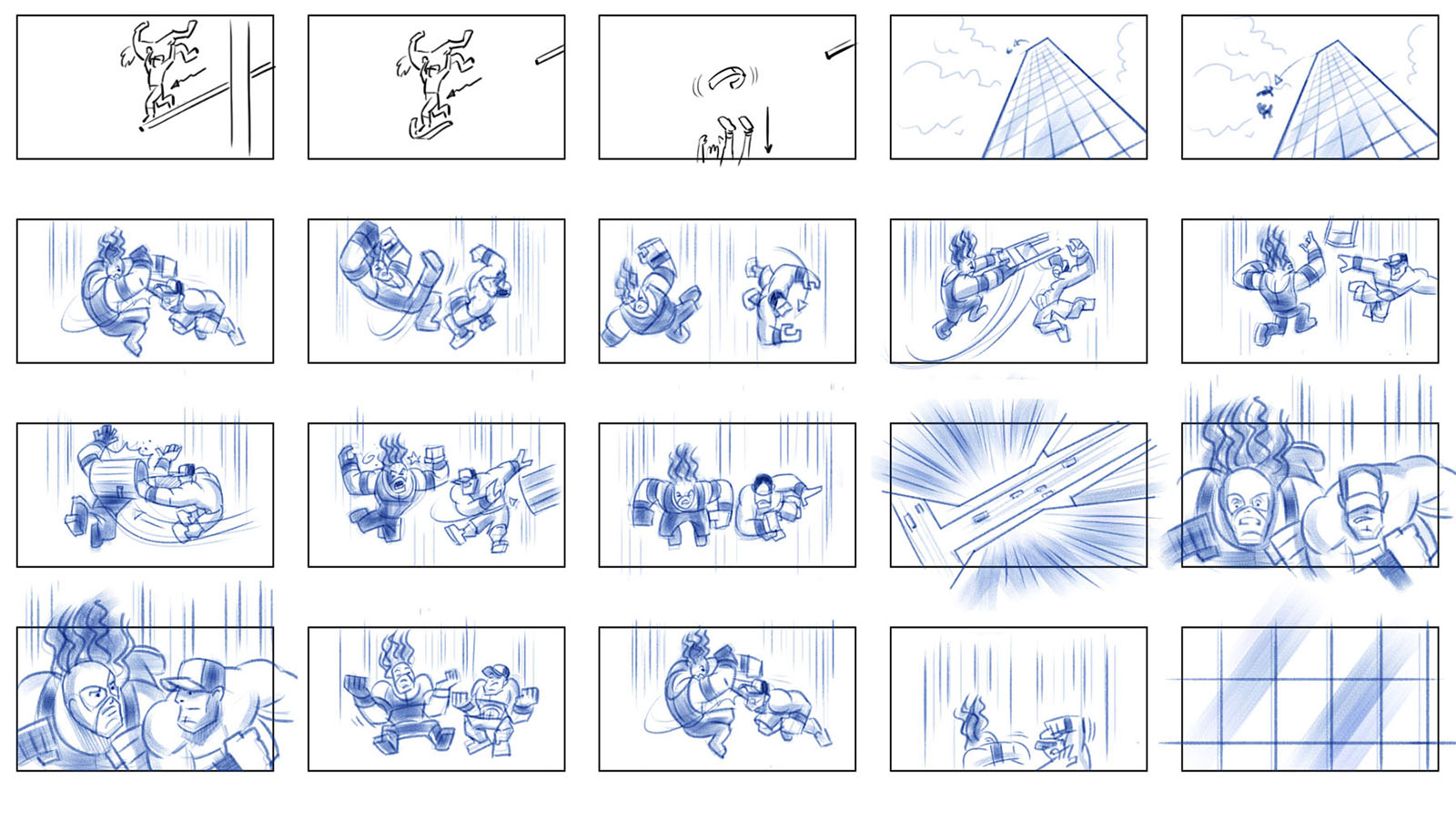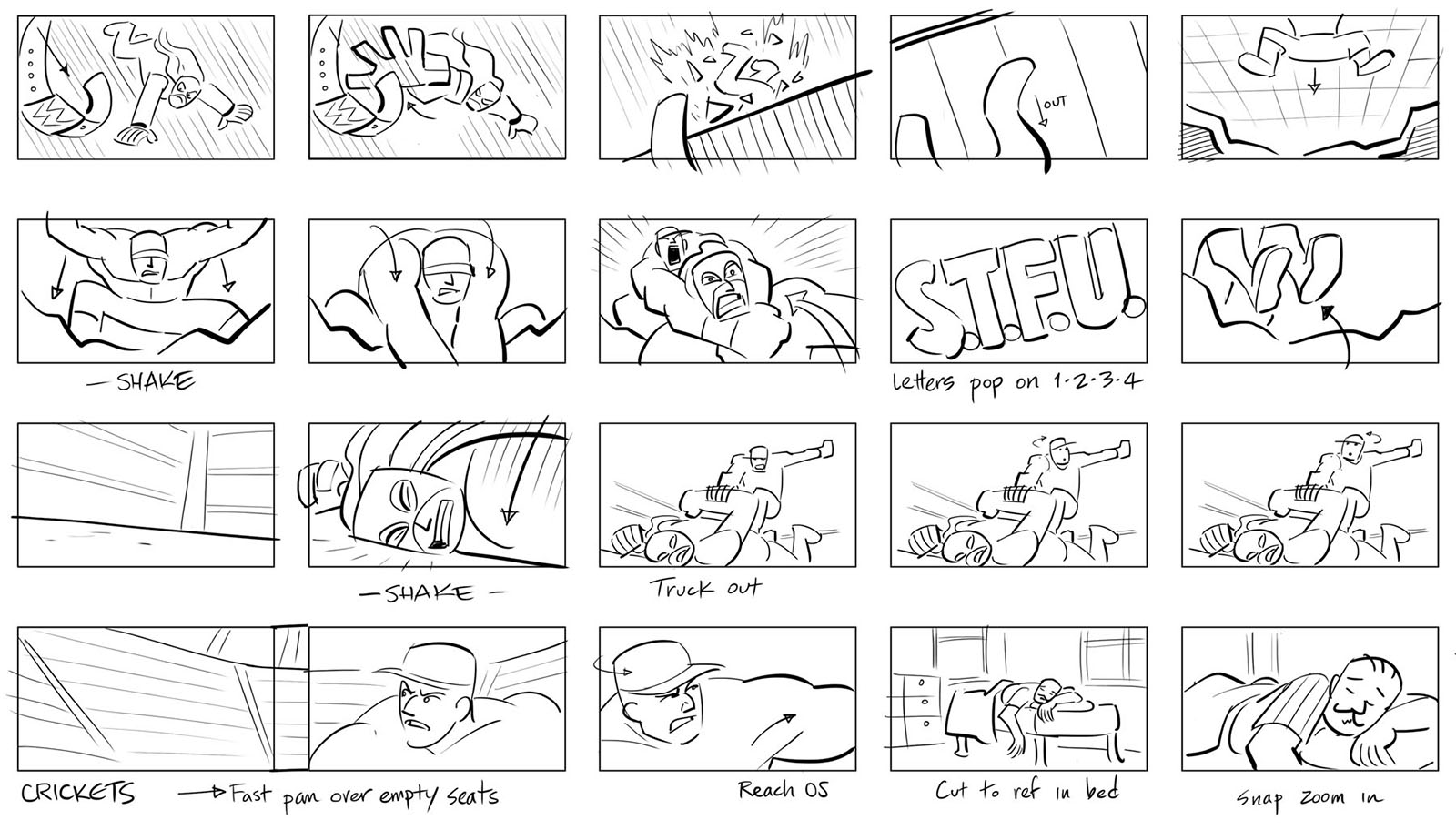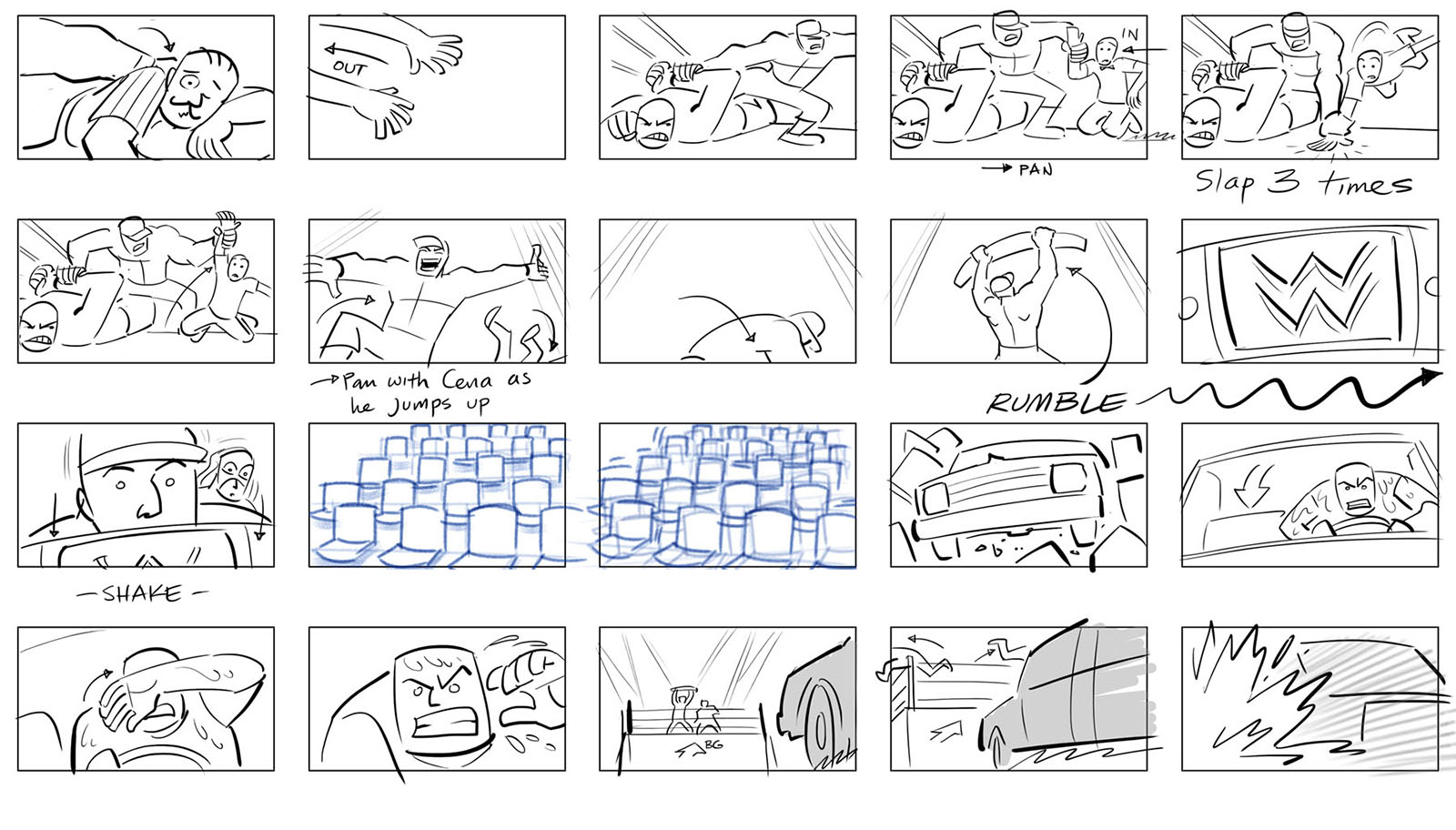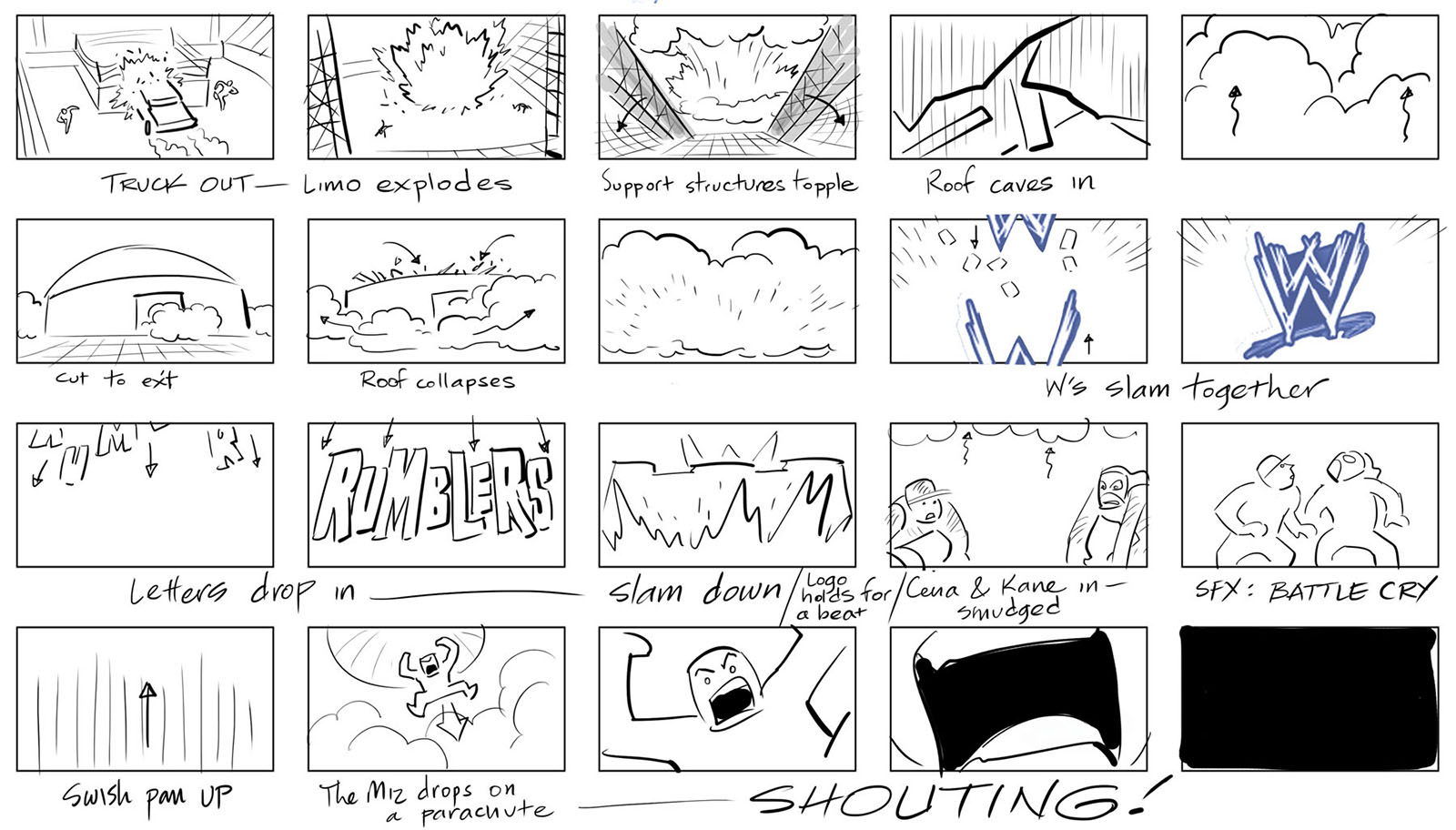WWE Rumblers, 2012
When you try to list major animation studios, the toy company Mattel probably doesn’t come to mind. But it should. Animated shows based on Mattel toys have been around for a long time, starting with Masters of the Universe in 1983. I’ve been involved with a few Mattel projects myself, producing storyboards for Monster High, several Max Steel movies (released in South America), and even an occasional foray into Barbie world. In fact, I finished directing another Mattel series (for Netflix) shortly before publishing this article. Here I’m bringing you a previously-unseen project based on the WWE Rumblers toy line launched in 2010. (See a commercial for it here.)
Full disclosure up front: I am not, nor have I ever been, a wrestling fan. I don’t mind sharing a planet with it, but it’s meant for other people. But I learned early on that if you’re a snob about the storyboard assignments you’ll accept, you won’t get very many of them. So when my friends at Mattel (Producer Audu Paden and Director Vincent Edwards) asked me to take on the pilot episode of WWE Rumblers, I was obliged to say yes. Besides, I was between larger projects and needed the work.
Also, I never turn down the chance to work on a pilot episode. You get to participate in the creation of something new, and if it gets picked up for a season, you’re already at the head of the line to work on it. If it doesn’t get picked up, at least you paid some bills and earned some bragging rights.
The downside of a pilot is that executives love to get their fingerprints all over it during the development phase, so they can take credit if it becomes a hit later. Which means you’re in for a LOT of revision notes. Ultimately, that’s what actually prevented this project from going forward, but I’ll save that part for the end.
When I came on board in February 2012, I was given a 5-page outline for a 3-minute short to be animated in CG. It was essentially a Looney Tunes-type fracas between two top-tier WWE wrestlers, Kane and John Cena, with a few cameos thrown in. I only had to draw a thumbnail storyboard, which I turned in a week later. Since the project was so short, I’ll take the opportunity to present something people outside the animation biz rarely see: multiple drafts of a storyboard as it goes through notes and revisions. Here’s where it started…
First draft
Predictably, there were revision notes on the first draft. They’re unavoidable. I can count on one finger the projects I’ve gotten over the finish line with no revisions. (It happened to be a Max Steel movie.) Revisions are never fun. Even the most experienced artists can’t help but take them personally at some level. The measure of your professionalism is how quickly you get past the rejection and back into the game.
Speaking as a director, it’s no fun for me to give revision notes either, but it’s worth it when an artist recognizes that their work has been improved by the process. If you just pretend you’re being paid to attend storyboard school, it all works out for the best. Anyway, here’s my next version of WWE Rumblers, drawn two days after the first draft…
Second draft
As you can see, a fair portion of the first draft was good as is. But I know that every time I get a first draft storyboard from another artist, I have three separate reactions. (1) This scene works fine, (2) this scene could be better, and (3) this scene gives me a whole new idea. My next step is to plug notes into the first draft, redraw as much as possible to eliminate guesswork, and send it back for revision. That’s basically what happened between the first and second drafts of WWE Rumblers.
It happened again between the second and third drafts, as you’ll see here. This version was done a day after the last one…
Third draft
After the third draft, things were basically in good shape. The next phase was cleanup. For reasons I don’t remember, this phase was given to another artist. It went through a couple rounds and was then built into an animatic. Fortunately, I saved a copy…
Work-in-progress Animatic
But that wasn’t the end. The animatic was presented to Mattel executives, and they did the fingerprint thing. Afterward, I was given a new round of revision notes. Some of the cleanup was preserved, but some was tossed out. I plugged in new material in my B&W thumbnail style, which you’ll clearly see in the next draft…
Fourth draft
That version, completed in March, was my last contact with the project. Presumably, it went back to the cleanup artist and everything was brought up to a single standard again. I imagine a revised animatic was built for presentation. But some time after that, things shifted significantly.
Instead of becoming the blueprint for a series called WWE Rumblers, it instead became grist for further development into a series called WWE Slam City, produced and directed by others, that debuted in 2014. Same building blocks, different building. You can see the end result on Youtube here.
Disappointing? Not for me. By that time, I was deeply entrenched in Avengers Assemble at Marvel Animation Studio, where I would remain in residence until the summer of 2020. WWE Rumblers became another credit on my resume and another project that made me a better storyboard artist. Like I said, if you just pretend you’re being paid to attend storyboard school, it all works out for the best.

